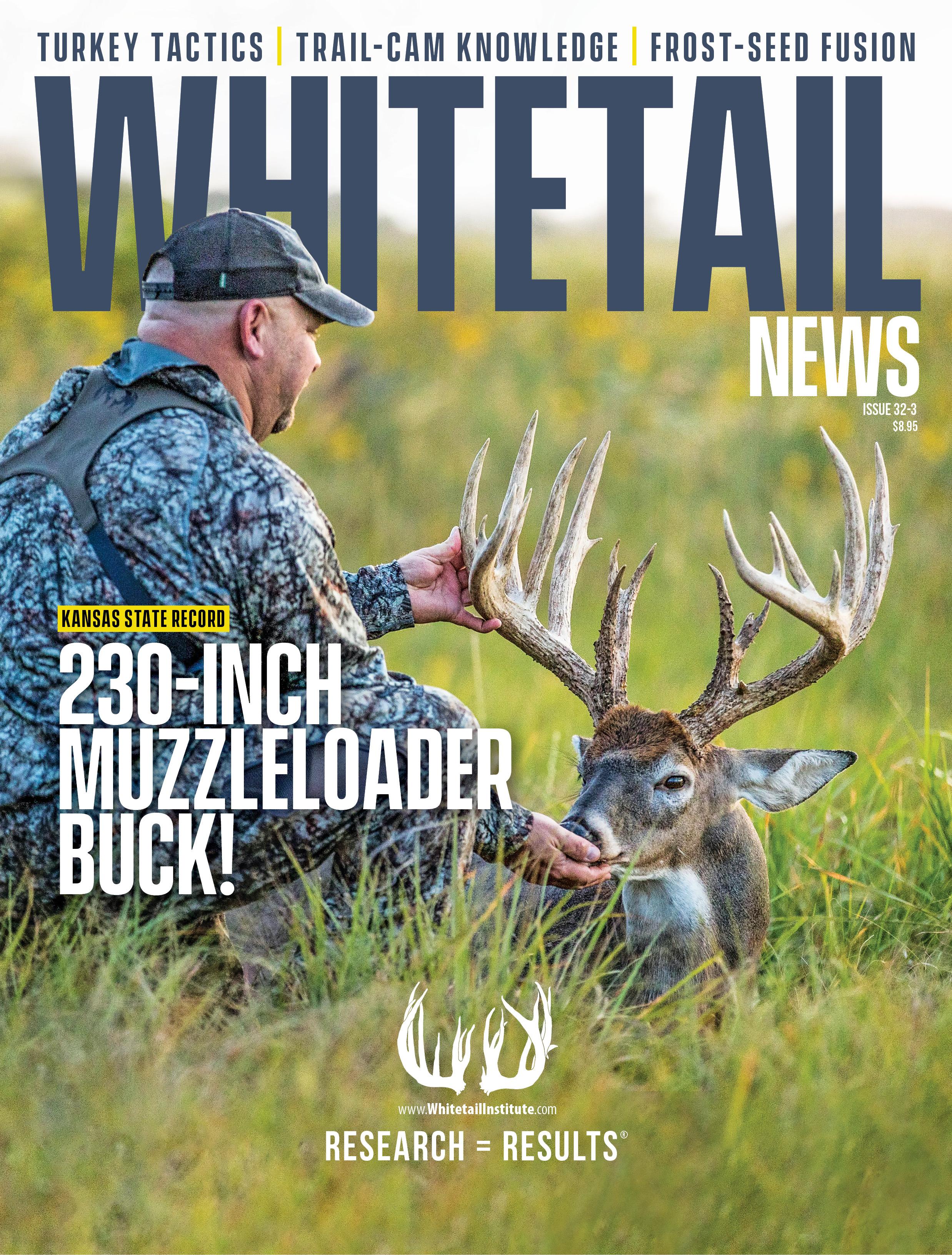
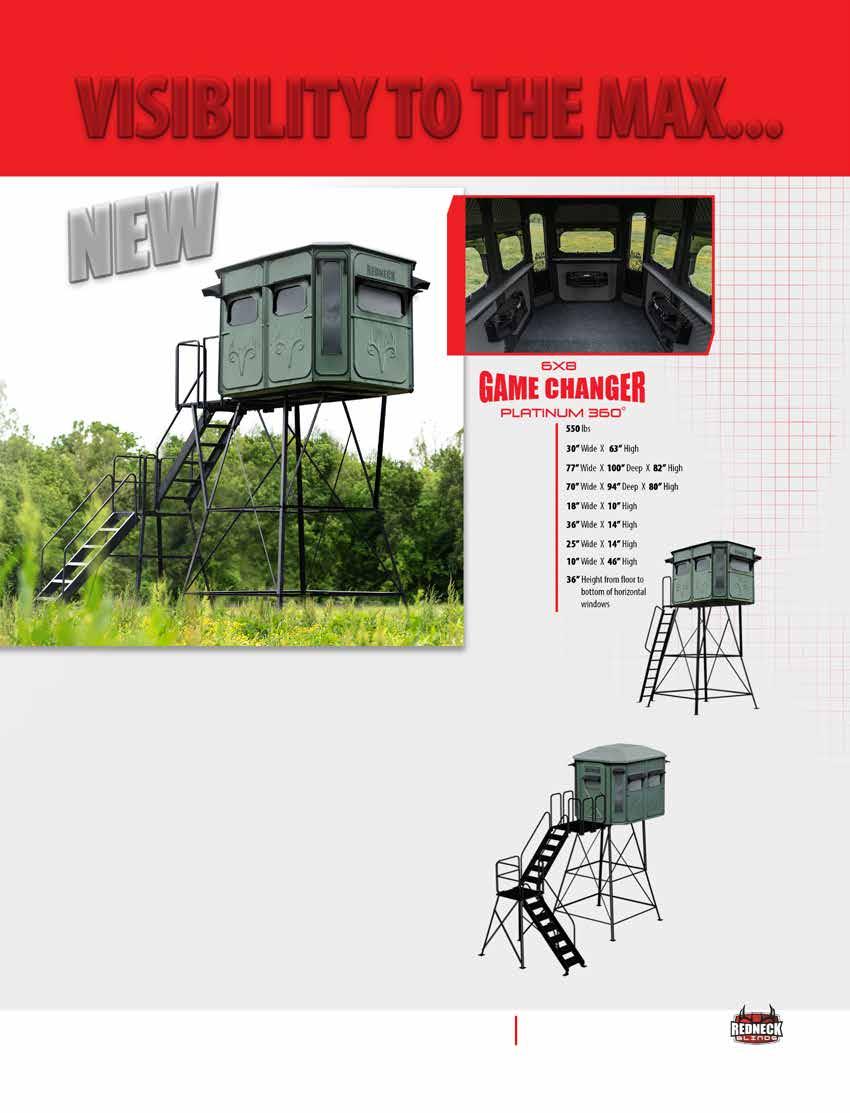


38
KANSAS HUNTER KILLS STATE-RECORD MUZZLELOADER BUCK

Donnie Monroe credits 30-06 mineral for his giant buck realizing its incredible potential.
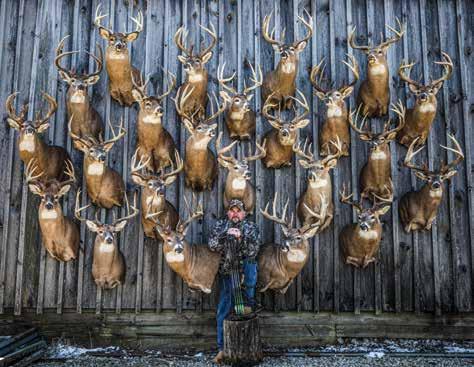

❚ By Scott Bestul
DEPARTMENTS
OFFICERS AND STAFF
WILLIAM COUSINS / VP/GM WHITETAIL INSTITUTE

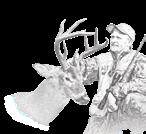
BRANDON SELF / DIRECTOR OF OPERATIONS
DAWN MCGOUGH / BUSINESS OPERATIONS MANAGER
JOHN WHITE / INSIDE SALES MANAGER
TYLER HOLLEY, CHASE DUNCAN, DANE RUSSELL / INSIDE SALES REPRESENTATIVES
DREW GILKERSON / NATIONAL SALES MANAGER
CLARE HUDSON / TERRITORY MANAGER, NORTHEAST
JOE THOLE / TERRITORY MANAGER, MIDWEST DR. CARROLL JOHNSON, III, DR. JOYCE TREDAWAY / AGRONOMIST AND WEED SCIENTISTS
JODY HOLDBROOKS / WILDLIFE BIOLOGIST

MARK TRUDEAU / RESEARCH AND DEVELOPMENT
JON COONER / MARKETING/COMMUNICATIONS MANAGER
BRIAN LOVETT/ WHITETAIL NEWS SENIOR EDITOR
SCOTT BESTUL / EDITOR
GERALD ALMY, KRIS KLEMICK, MATT HARPER, MARK OLIS / FIELD EDITORS
JEREMY FLINN, MICHAEL VEINE, DARRON MCDOUGAL, JOSH HONEYCUTT, BOB HUMPHREY / CONTRIBUTING WRITERS WADE ATCHLEY / ATCHLEY MEDIA ADVERTISING DIRECTOR
PERIMETER
Use food plots for turkey hunting without killing that longbeard on the plot.
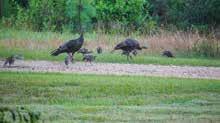
FOOD PLOTTING
18
FROST SEEDING FUSION Q&A
Pennsylvania expert Jason Say holds court on this versatile blend.
❚ By Scott Bestul
MEET JODY HOLDBROOKS
This wildlife industry veteran can help you with the management process. ❚ By Jody Holdbrooks
26 MANAGEMENT
CELLULAR TRAIL CAMERA 101
FOOD PLOTTING 12
PROJECTS TO HELP WHITETAILS

You can always do something to improve your property. Try these suggestions to get your hands dirty, help deer and boost hunting success.
❚ By Gerald Almy
38 HUNTING
BREAKING THE 200-INCH BARRIER
MANAGEMENT
Most folks know the basics of managing for big bucks, but keeping fawns thriving is critically important to the long-term health of your herd. ❚ By Matt Harper
FOOD PLOTTING 50
NOT JUST A PRETTY BAG
Don’t be swayed by clever marketing ploys. Trust a food plot seed company that has produced proven results for decades. ❚ By Matt Harper
FOOD PLOTTING
56
POWER PLANT: WHY IT’S SO IMPORTANT
Managers of deer and other wildlife can see significant benefits from this blend.
❚ By Jody Holdbrooks
58 MANAGEMENT
TURKEY
WHITETAIL
14 HUNTING STRATEGIES Vol. 32-3 | Whitetail News 3
CONSULTING 22
32
SUCCESS 10 4 | A MESSAGE FROM THE GM 6 | SCIENTIFICALLY SPEAKING 8 | ADVANCED FOOD PLOTTING 59 | MY TROPHY WHITETAILS 62 | FIRST DEER 66 | BACK-40 NOTEBOOK
Adam Hays is driven to kill big bucks — something he does with uncanny regularity. ❚ By Gordy J. Krahn STRATEGIES
PLOT GOBBLERS
❚ By Darron McDougal
Cellular trail cameras can be game changers for deer hunters, but some newcomers go through a learning curve of frustration. Here’s the rundown on cell cameras, optimized settings for extended battery life and real-world examples of how they can change your hunting. ❚ By Mark Olis
IMPERIAL
SELECT CHUFA
Learn how this sedge can help your flock ❚ By Whitetail Institute Staff
44 START ‘EM YOUNG
Off-Season Preparation Off-Season Preparation
PAYS OFF WITH REWARDS
Ihope everyone had an enjoyable hunting season. As winter winds down and we begin to see the hints of spring, it’s again time to turn our attention to the new year and the promise it offers.

Don’t forget that our chances and quality of hunting success in fall can be greatly improved in direct proportion to the quality and effort of our preparation earlier in the year. Examples are maintaining perennial food plots, providing deer with effective minerals and planting spring’s high-protein forages.

As you enjoy those tasks, share your experience and observations with family and friends. That connection will build
memories that repay your efforts many times over — not just when we create them, but also later as we enjoy the memories of those experiences with family during future gatherings, and as we reminisce in our later years.
Remember, just as the quality of hunting success depends so greatly on how much time and effort we put into it, meaningful relationships fostered through shared experiences require time and effort, and it’s always well worth it. If you plant it, you will reap the rewards — priceless memories and fellowship, plus excellent hunting.
 — William
— William
William Cousins~VP/GM Whitetail Institute
We live in a connected world. Why should your Trail Camera be any different? Our proven HyperFire 2™ camera is now 4G LTE Cellular Enabled, allowing you to receive images from your camera almost anywhere in the world via email or through our Mobile App for Android® or iOS®. Cost effective data plans utilizing Verizon® or AT&T® are available directly through RECONYX and start at only $5 per month, with no long term contracts. With our Mobile App, you can create a custom cellular plan, manage images and check status or change camera settings from anywhere. All RECONYX® HyperFire 2™ Cameras are Made in the USA and are backed by a full 5 year warranty. RECONYX®, See What You’ve Been Missing…






































MADE IN USA @RECONYX_CAMERAS
HYPERFIRE 2 4G LTE CELLULAR RECONYX.COM
SCIENTIFICALLY SPEAKING
■ by W. Carroll Johnson III, Ph.D. – Agronomist and Weed Scientist

SMARTWEEDS:
THE BANE OF FOOD PLOTS
Plus, where lumpers and splitters disagree, and how that affects food plotters.
Part of my education required that I take several classes in the taxonomy and systematics of many organisms. That is, I had to learn to identify plants, insects, reptiles, amphibians, fungi and bacteria. I needed to learn the skill of identification and also had to know how those organisms were organized in the grand hierarchy of systematics. For those who study and work in this aspect of biology, there are two broad groups: lumpers and splitters. Lumpers see similarities among organisms and ignore minor differences. Splitters are professional nitpickers who focus on differences and gloss over similarities. As a lifelong lumper, I view splitters with a high degree of indifference.
The nature of weed control questions that eventually reach me follow a distinct pattern. In early spring, almost all incoming questions are related to cool-season weeds that grow larger as winter passes, and those are mainly the weedy brassicas (a topic of another article). As summer progresses, warm-season weed control questions become common, and many of those weeds are what lumpers like me call smartweeds. Smartweeds deserve
a detailed discussion that can help readers identify the weeds and improve management to reduce losses.

Overview
To understand smartweeds as a weed pest in food plots, we need a brief discussion on the ecology of this broad group of plants. Smartweeds are in the botanical family Polygonaceae and are found throughout much of the central and eastern United States. Buckwheat is a cover crop that’s also in the family Polygonaceae but is not considered a weed. Smartweeds are in the genus Polygonum, which is Latin for “many joints.” Smartweeds and others in the Polygonum group of weeds have stems with swollen nodes or joints on the mainstem, which is the origin of the Latin name. This is useful information when identifying smartweeds.
Smartweed species can be annuals or perennials, and all are warm-season herbaceous plants, meaning they do not have woody or wood-like stems. It has been my experience that smartweeds are found in wet-natured food plots, although there are exceptions. In spring and early summer, smartweeds emerge from seeds in the
6 Whitetail News | Vol. 32-3
■ Smartweed leaves are lance shaped. Some species have a reddish watermark on leaves, and some do not.
soil or dormant rootstock (perennial species). Later, smartweeds begin flowering from July through October. The first heavy frost in the autumn will kill annual smartweeds or burn back perennial species.

Identification

Three smartweed species commonly infest food plots: Pennsylvania smartweed, lady’s thumb and the perennial swamp smartweed. Smartweeds all have a similar appearance at the seedling stage; leaves that are lance-shaped and slightly pointed. All smartweeds have the same general leaf shape, with leaf size increasing as plants mature. Some smartweeds have a red watermark on the leaves, and some do not. The defining characteristic of smartweeds are the swollen joints on the stems that are covered by a clear flap of tissue called an ocrea.
Flowers are distinctive — small white to pale-pink flowers arranged in a cylindrical cluster on the end of flowering stalks. Focus on the flowering arrangement and not flower color, because shades of color vary.
Smartweed Management
This is the second Whitetail News article in the past two years on smartweeds. Of all the weed control topics that must be addressed, focusing on the same weed in two articles published at such a brief interval indicates the importance and prevalence of this weed among food plotters. Smartweeds can be effectively controlled, and Slay is the treatment of choice. The key to effective smartweed management using Slay is the timeliness of herbicide application that targets seedling smartweeds. All
smartweeds can be controlled with Slay if the weed is in the three-leaf stage or smaller. The effectiveness of Slay will diminish as smartweeds grow larger. When smartweeds begin to flower, Slay is ineffective.
Botanists who are splitters might argue this statement, but being able to tell if a smartweed is Pennsylvania smartweed, lady’s thumb or swamp smartweed is not all that important in food plot weed management. Take that statement with a grain of salt, because I’m not a splitter but a card-carrying lumper. My logic is that management strategies for the three common smartweed species are basically the same, and knowing which smartweed species is in your food plot is academic. I would rather have food plotters invest time and effort in monitoring food plots early in the season for smartweed emergence and treating them when smartweeds are small instead of obsessing about which species of smartweed is infesting the plot. If you’re not sure if a weed seedling is a smartweed, take a close-up picture of an individual plant and email it to me at the Whitetail Institute’s main office.
Perspective
This will sound strangely amusing: Graduate students in weed science have an extracurricular training opportunity in practical field skills that can also be viewed as a rite of passage before they are employable. This is in the form of competition among teams of weed science graduate students from landgrant universities. Regional weed science societies host these events annually, and
every four years, there is a national competition called the Weed Olympics.
Graduate students compete in weed identification, herbicide symptomology, sprayer calibration and diagnosis of field problems, in which a student assumes the role of an expert, and somebody like me plays the role of an exasperated farmer or customer. These competitions are a big deal and invaluable in graduate student training — almost like a finishing school. I competed twice during graduate school. Four years ago, one of my daughters competed in the national Weed Olympics. For the weed identification part of the contest, students must correctly identify several dozen weeds to species (common and scientific names) and correctly spell the names. Plant identification to that degree comes easy for some (splitters). For mere mortals like me who are lumpers, the weed identification exam is a needless exercise in pettiness. The point to this story is that smartweeds as a group are very similar in appearance, and fortunately, control strategies are similar among the smartweed species.
Use a lumper’s big-picture view, and learn about smartweeds as a group so those weeds can be effectively managed. Don’t become fixated on which smartweed species is present. Focus on identifying smartweeds as a group, especially early in their life cycle when control efforts are effective.
IMPERIAL
WHITETAIL SLAY
■ Selective broadleaf herbicide.
■ 4 ounces treats 1 acre; 1 pint treats 4 acres.
■ Slay is field-tested and has proven effective for controlling broadleaf weeds in clover or alfalfa fields. Slay can be easily applied with a four-wheeler or tractor sprayer. Using the right herbicide can eliminate the need for replanting as often and ensure that your food plots have maximum longevity.
Acknowledgement: Appreciation is expressed to Dr. Lynn Sosnoskie, weed scientist at Cornell University, for providing some of the pictures in this article.

Vol. 32-2 | Whitetail News 7
■ Smartweed seeds are round, flattened and glossy-black.
ADVANCED FOOD PLOTTING
State-of-the-art tips and techniques for high-level land managers
■ by Joyce Allison Tredaway, Ph.D. – Agronomist and Weed Scientist
USING GLYPHOSATE EFFECTIVELY
As I was preparing to write this article, I asked my 14-year-old son to tell me a few basics about glyphosate. He said it kills pretty much every weed, not to apply it when it’s raining, and that it’s easy and safe to use. That made me think about how difficult it can be writing about a herbicide that’s so widely used.
Glyphosate is the most widely used herbicide in the United States and worldwide. That’s because of its effectiveness, ease of use, low toxicity and low cost. However, although glyphosate is a very good herbicide, it’s important to know its limitations, how it can best be used in food plots, and what response to expect from various weeds when glyphosate has been applied. For effective glyphosate
applications, it’s important to understand how it works in the plant, how to apply it correctly and how to use it effectively in food plots.

How it Works
Glyphosate is the active ingredient in the herbicide Roundup, and there are many effective generic glyphosate products available. Glyphosate works by inhibiting the EPSP enzyme in plants — an enzyme needed to produce plant proteins. This occurs in the shikimic acid pathway of the plant (animals and humans do not have a shikimic acid pathway, nor do they produce EPSP enzymes). When the plant proteins are inhibited by glyphosate, the plant slowly starts to die, yellowing within days.
Some glyphosate products at retail stores advertise results within one hour. These products have an additional ingredient, diquat or pelargonic acid, added to the glyphosate to show consumers some activity is occurring.
Applying it Correctly
Glyphosate is a systemic post-emergence herbicide. That means it’s applied to existing green plants over the top (post-emergence). That also means it will kill any plant it comes in contact with. Therefore, if you’re spraying existing food plot forages, it will also kill them. Systemic means it moves throughout the plant, so when the herbicide is applied to green vegetation, it will move from the leaves to the root, killing the entire plant.
8 Whitetail News | Vol. 32-3
This common herbicide isn’t a magic bullet, but it has many uses for controlling weeds in food plots.
FOR FOOD PLOT MANAGEMENT
■ This photo shows that the perennial weed yellow nutsedge can be controlled with glyphosate if applied at the correct timing during field preparation.
Many glyphosate formulations have an adjuvant, or surfactant, already added to the mix. It’s important to determine whether the glyphosate has an adjuvant included when purchasing it. If an adjuvant is not included, you must add one. Reading the label will determine whether the product contains an adjuvant.
Glyphosate for Food Plot Preparation
When preparing new land for food plots or re-establishing areas that were previously in food plots but with hard-tocontrol weeds, glyphosate is a must-have herbicide. Glyphosate in combination with 2,4-D or triclopyr is recommended for re-establishing areas with weeds such as Carolina horsenettle, docks, thistle, brambles, briars and other broadleaf weeds not controlled by glyphosate alone that are infesting food plots and have no herbicides available to control them. Glyphosate provides systemic, non-selective control of annual broadleaves and grasses. However, glyphosate alone is not always an adequate treatment for tough-to-control broadleaf weeds.
■ In this example, the intent is to treat field margins and prevent goldenrod and other perennial weeds from encroaching into the food plot.

ATV-sized vehicle. Ideally, they need to be height adjustable, with hydraulics on a tractor or by simple mechanical means such as those on ATV systems.
The downside of a weed wiper is the weeds need to be substantially taller than low-growing forages. That means the weeds are growing and competing with the forages until the desired height differential is achieved. This equates to reduced forage growth until the weed wiper is deployed. Technically, from a weed management perspective, that’s not ideal. However, the entire concept is based on nonselective herbicides selectively applied to tall weeds. Given our limited weed-control options in food plots, a weed wiper is a good option to manage tall weeds in low-growing forages.
For example, goldenrod is a perennial broadleaf weed with a deep taproot. It reproduces by roots, bulbs, stems and seeds, making it difficult to eradicate if it gets into a food plot. Glyphosate alone will not control goldenrod when the plant is mature and flowering. However, it’s a useful tool during field preparation to prevent perennial weeds such as goldenrod from encroaching on neighboring food plots.
Timing
Glyphosate can be a very effective herbicide
nual weeds in food plots. However, you can use glyphosate in late summer or early autumn to effectively control perennial weeds. As mentioned, glyphosate is a systemic herbicide, and treating perennial weeds such as goldenrod when they are larger allows glyphosate to translocate to the roots, thus killing the large roots they need to reproduce. Glyphosate is not a magic bullet, but it can be a very effective herbicide for food plots if used properly.
Glyphosate for Wiping Tall Weeds in Food Plots
Glyphosate for Spot-Treatment
Often, some weeds are present in certain areas of a food plot. They don’t justify replanting the entire food plot but might have just encroached from areas around the plot or possibly just appeared in certain areas. Spot-spraying glyphosate to these weeds is an option using a backpack sprayer with an adjustable nozzle that sprays a stream of herbicide precisely to an individual weed. The more precision with which you can target an individual weed, the less incidental spray contact with clover or other forages planted in your food plot. Make sure your backpack sprayer does not leak or drip. Obviously, the severity of the infestation and size of the food plot might make that approach unfeasible. This is a labor-intensive weed control strategy.
The Glyphosate Advantage
weeds. Wild radish and yellow nutsedge can be controlled by glyphosate if applied at the correct timing. Many of the pictures we receive are taken when the weeds are mature, and mowing is the only option. Most herbicides — not just glyphosate — will perform according to expectation if applied when the weeds are small. That’s particularly true when dealing with an-
if applied to very small
Another useful tool for glyphosate in food plots is through the use of a weed wiper, which is a horizontal sealed PVC pipe with wicking materials along the bottom, saturated with a concentrated solution of glyphosate. A weed wiper usually contains a concentrated solution of glyphosate. Along the bottom of the PVC tube are wicks or pieces of wicking material saturated with the herbicide. The PVC tube is mounted in front of or behind a tractor or ATV. Weeds (including goldenrod) that are significantly taller than low-growing forages are wiped with the herbicide solution and killed. Weed wipers can be tractor mounted and quite large (the width of area treated) or small enough to operate on an
Glyphosate is a useful tool for food plotters and can be used in different ways to achieve weed control. Whether it’s sprayed for food plot preparation, on field edges, with a weed-wiper or as a spot-treatment, when applied at the correct timing, it can be very effective on many weeds.
Vol. 32-3 | Whitetail News 9
STATE-RECORD MUZZLELOADER BUCK
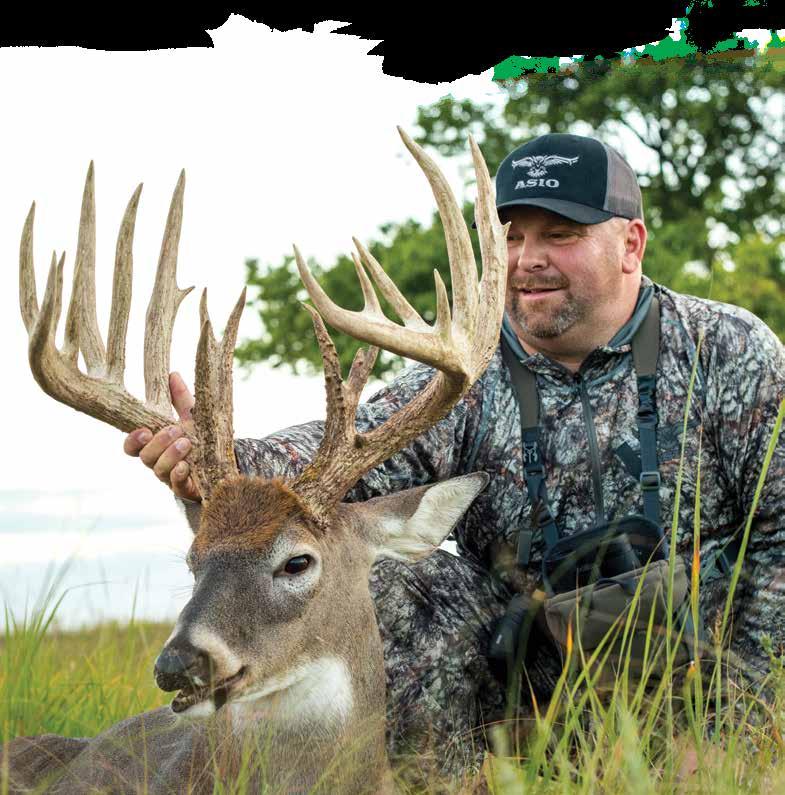
10 Whitetail News | Vol. 32-3
KANSAS HUNTER KILLS
Donnie Monroe credits 30-06 mineral for his giant buck realizing its incredible potential.
■ by Scott Bestul
Donnie Monroe knew he’d killed a special buck when he downed a 23-point whitetail that grossed 230-4/8 inches three days into Kansas’ early muzzleloader season. But he didn’t know the monster buck would break the Buckmasters’ mark for the top irregular (Buckmasters’ term for nontypical) category for muzzleloader hunters in the Sunflower State.
Monroe’s buck netted 213⅞ inches, topping the previous category leader by ⅞ inch. Buckmasters acknowledged Monroe’s buck as the new state champ in late September 2022. The group scores racks similarly to Boone and Crockett, though it eliminates spread credit, does not require a 60-day drying period and does not recognize deductions.
A Familiar Buck
Monroe is no stranger to big deer. As a member of the Team 200 television show, he has several trophy bucks on his wall,
year, and I kind of figured his buddy was going to be my target buck this fall,” he said. “That deer was a 4-year-old, 150-class 10-point that I figured would be a Booner this year. Well, that deer did look really nice this summer, but his running buddy had really caught my attention. As the summer wore on and I studied trail cam pics, I kept thinking, ‘That buck could score over 200 inches.’”
But the buck presented challenges, Chief among them was that the 160-acre farm Monroe was hunting was bordered on one side by an avid hunter and an outfitter on the other.
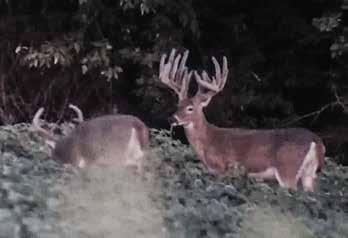

including a 200-inch buck shot in 2018. Still, this past season, he had his hands full with a buck he’d known since 2021.
“This buck ran with another deer last
“I don’t kid myself about what I can accomplish on this property,” he said. “I’m not going to keep a buck on here and prevent him from going any other place. So, I just try to make it as attractive to bucks as it can be, so it

Vol. 32-3 | Whitetail News 11
“
“I’D HAD PLENTY OF INTEL TO LET ME KNOW HOW BIG HE WAS, BUT WHEN YOU ACTUALLY SEE A DEER LIKE THAT IN FRONT OF YOU, WELL, IT’S JUST AMAZING.”
sometimes a terrain change can tweak wind direction a bit, and I knew a spot where I thought that could happen,” he said. “And when I snuck in there, I was right. The wind was more east-southeast, which was almost perfect for the deer, so he would be comfortable moving into the wind. But it was just right enough for me that I thought I could go undetect ed. I’m also a firm believer in the Moon Guide, and it was the first red moon of the month. I really felt like if I was going to take a shot at this deer, this would be the day and the place.”
Monroe’s plan worked, as he slipped into position with the wind still barely in his favor.
“I knew I was going to have a narrow window of opportunity if he showed up, so I sat on the ground and kept my muz zleloader on shooting sticks, with the butt against my bino harness,” he said. “I’m nor mally a bowhunter, and I probably should have carried my bow, since the buck came through within my effective range. But I simply wasn’t taking any chances with this whitetail.”
As he settled in, Monroe prayed that the monster buck would move toward the beanfield during shooting hours.

“Suddenly, I could hear a deer moving and got the gun ready,” he said. “When the buck popped in my opening, I barely had time to get nervous. Suddenly he was standing broadside at 40 yards, filling up my opening. Fortunately for me, that’s not much of a shot for a muzzleloader. I settled in on his shoulder, touched off the shot and watched him crash off. I just let out a big breath and sat down for a bit. I knew I’d made a good shot. Finally, I stood up and walked over to where I’d last seen him, and I spotted him piled up not far away.

“When I walked up to the buck, it was pretty humbling. I mean, I’d had plenty

30-06® Mineral/Vitamin Supplement

■ Delivers essential macro and trace minerals along with vitamins A, D and E, which are needed for a healthy herd and for bucks to reach more of their genetic potential in antler growth.

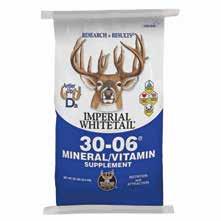
Antler Up D3 increases calcium and phosphorus uptake to promote growth and development of antlers. Promotes heavier body weights, and improves the overall health of deer.
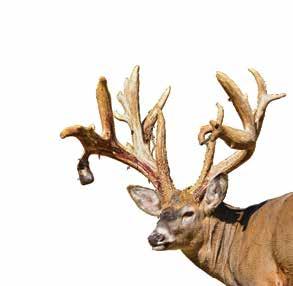
www.whitetailinstitute.com 239 Whitetail Trail, Pintlala, AL 36043 BREAKING GROUND FREE E-NEWSLETTER!
of intel to let me know how big he was, but when you actually see a deer like that in front of you, well, it’s just amazing.”
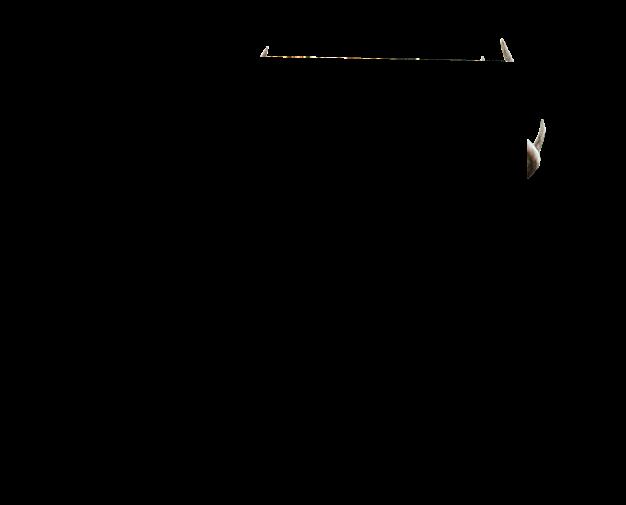
Kansas Dream
Though he’s had plenty of success, Monroe admitted he’s awestruck whenever he stands over a giant whitetail.
“I grew up dirt-poor in Indiana, and I honestly learned to hunt just to put good food on the table for me and my dad,” he said. “But the more I hunted, the more I fell in love with it, and it’s turned into a way of life for me. I’d been coming to Kansas as a nonresident for 17 or 18 years then I had the opportunity to move here for work. So now I get to not only hunt this magical place but live here. I honestly have to shake my head now and then. This is like living a dream
Set
Your Sights
on Brillion Farm Equipment
Brillion Farm Equipment offers a full-line of equipment suited for food plot enthusiasts. The Food Plot Seeder is an all-in-one solution for food plots handling seedbed preparation, seed metering and placement, as well as seedbed finishing. Brillion’s ground driven Till ‘N Seed® shreds existing food plots and plants numerous food plot seed mixtures. All products are backed by Brillion’s years as an industry leader in the Seeder and Pulverizer industry!





www.brillionfarmeq.com
Brillion, WI 54110 855.320.0373 ©2023 Brillion Farm Equipment www.facebook.com/landollag
Till ‘N Seed® Model BPSBA-8
Food Plot Seeder Model FPSB-6
The Till ‘N Seed is now available in 8’ working widths in pull-type or three-point hitch configurations.
PERIMETER PLOT GOBBLERS
Use food plots for turkey hunting without killing that longbeard on the plot.
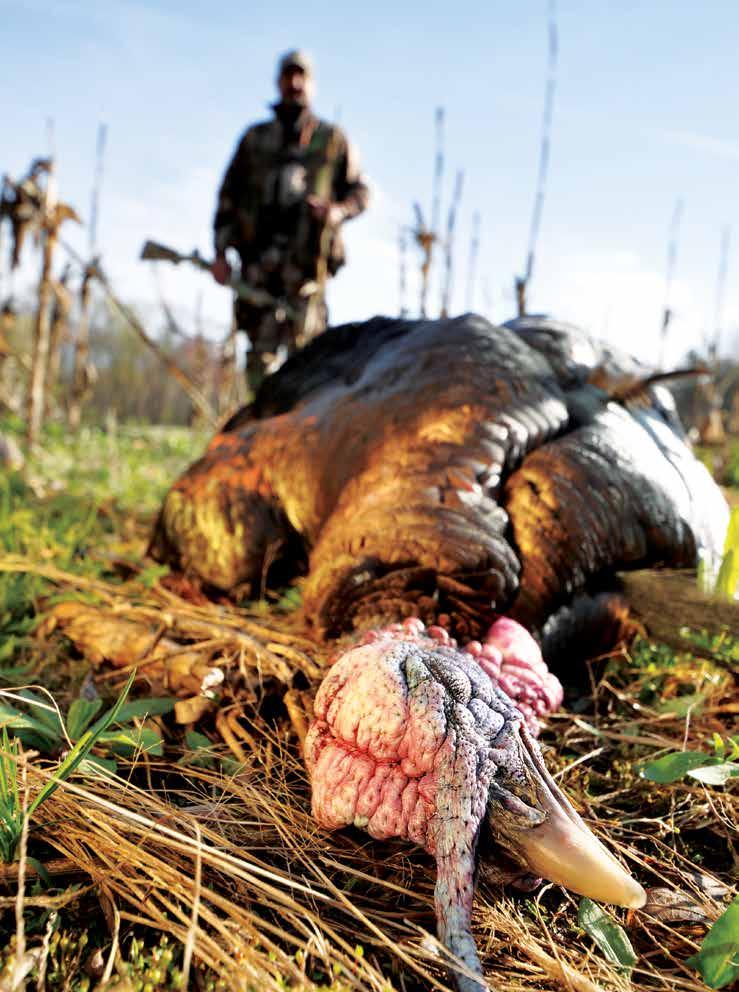 ■ by Darron McDougal
■ by Darron McDougal
14 Whitetail News | Vol. 32-3
Day after day, Wade Atchley sat at his food plot, watching hens and jakes come to feed.
■ Food plots will keep turkeys on your property, but you might have to look at surrounding flats, benches, ridges and other areas when hoping to tag a gobbler.
The gobbler, however, hung up in the timber off the plot. For eight consecutive mornings, the vicious cycle continued. Atchley flirted with insanity. He did the same thing daily expecting a different result. If he continued to hunt the plot, the gobbler would eventually slip up, right?
“There were times when the hens would leave the plot in the opposite direction,” Atchley said. “Instead of walking through the plot to join them, the tom would circle around through the woods, cut down through a branch hollow and then re-join the hens. He absolutely wouldn’t use the field. He obviously could monitor the hens from the security of the woods, and that’s all he wanted to do.”
On the ninth morning, however, Atchley decided he’d had enough.
“I set up on the oak flat that the tom had been strutting on daily,” he said. “The flock was roosted about 200 yards uphill from me on a ridge. The hens flew down, went through a branch hollow, and then made their way to the plot as usual. I figured he’d follow them, so I got up and moved to the branch hollow. He gobbled and gobbled from the woods as he worked
toward the food plot. So, I cut the edge of the field and went right to where he’d been the previous days. I sat against a big oak tree and shot him at 20 yards. He was going to do exactly the same thing he’d done the other days, but I changed my tactic and killed him.”
It’s a food-plotter’s dream to watch a gobbler strut through a carpet of lush Imperial Whitetail Clover right down the gun barrel. But it doesn’t always work that way. When a longbeard seems to avoid your plot, don’t look for another bird. Instead, assess the tom’s tendencies, and then consider land features around your plot to peg a new ambush.
Here are several considerations for using food plots for turkey hunting without killing your bird on the plot itself.
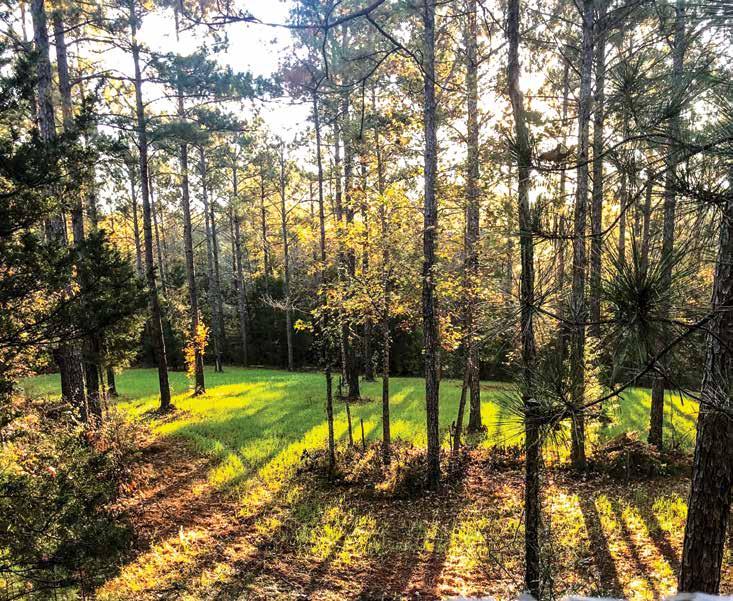
Attract the Hens
Food plots are attractive to turkeys for several reasons. First, the right planting can offer good food for the birds. But turkeys aren’t just after the green stuff. Your Imperial Whitetail Clover plot can be a jungle of insects and worms, and the creepy crawlies become easy targets for birds. If the soil is suitable, turkeys will often take dust baths along the plot edges, too. I’ve seen hens do this many times.
Vol. 32-3 | Whitetail News 15
Gobblers might cruise through the plot randomly, but it’s common for encounters to play out similarly to Atchley’s hunt. If a longbeard can see the plot from the timber without entering it, it might be difficult to call him to the plot and kill him there. But because you’ve hooked the hens by offering them a place to feed and take dust baths, a gobbler or two will likely occupy the area even if they aren’t using the plot. But how do you decide where to set up outside of the plot?
Hunt the Thoroughfares
If your plot has any trails or trail system leading in or out, it can be a great place to decoy a gobbler. Turkeys naturally travel the paths of least resistance, and an ATV trail, logging road or skidder road are valid options. Turkeys usually travel them, and such roads also provide good visibility in a woodsy setting where gobblers feel more secure.
How far off the plot should you set up on a trail or logging road? I’d suggest not going too far — maybe only 40 yards to
start. Decoy visibility, if you’re using decoys, is huge. In a perfect world, your decoy would be visible to gobblers in the plot — if they enter it — and toms that swing
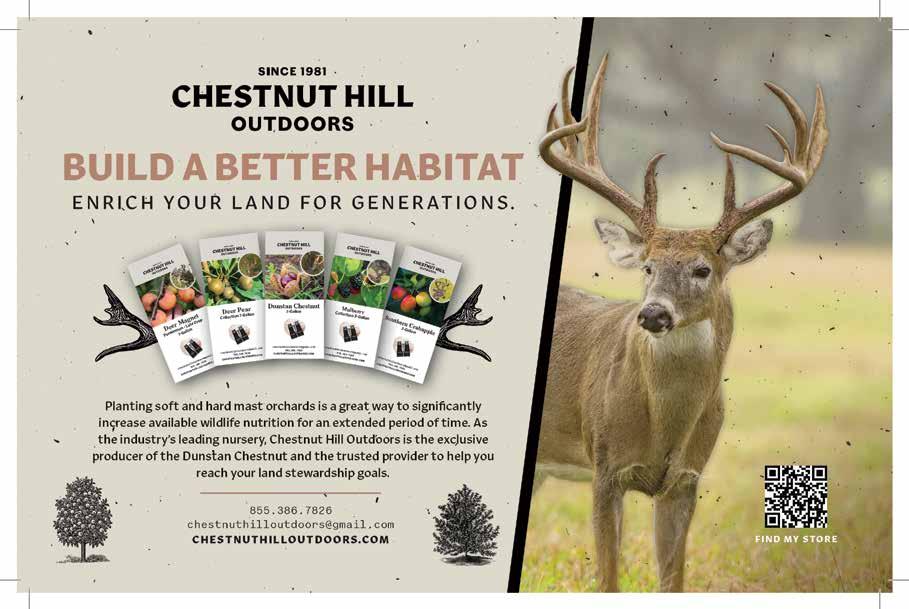
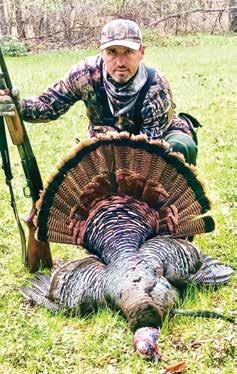
around the field and cross the trail or road.
If you want to pre-scout areas before your hunt, look for tracks in the mud (wetter climates) and strut marks in the sand (drier climates). Those, along with droppings and leaves scratched away, can indicate how regularly turkeys are using the trail or road. Strut marks are my favorite type of sign, because they’re evidence that a gobbler was right there. He strutted there once. He’ll probably do it again.
Atchley affirmed that roads facilitate turkey traffic.
“A friend of mine cut a road through the woods to use as access to his deer stand,” he said. “It turned out that toms preferred to enter the plot on that road. The hens would often fly down into the field or to the field edge, but the toms would fly down, hit that road and then come to the field. Man-made access can improve your food plot for turkey hunting. It gives them better access, but it also gives you more options for hunting off the plot.”
■ Wade Atchley switched tactics to turn the tables on this hennedup Alabama gobbler.
Hunt Oak Flats, Benches and Ridges
Is there a ridge or bench below a ridge adjacent to your plot? If so, these areas can be ideal for hunting when you know gobblers are in the area but not frequenting the plot. Although it seems like the plot would be a longbeard’s preferred strutting area, he might choose a flat bench or ridge, especially if it’s higher than the plot but within view.
“Gobblers where I hunt in the South and also the Midwest notoriously hang up on oak flats,” Atchley said. “They love them. If you have an oak flat off your plot, it’s a killer spot to set up. Gobblers use them as strut zones. Often, there’s good visibility through the timber, so they can see — and be seen — without entering a clearing or field.”
Hunt Adjacent Feeding Areas
If you think turkeys only feed in your food plot, think again. There are few periods throughout the day when turkeys aren’t feeding. You can do a couple of quick circles through the woods around your plot and look for places with lots
of scratching sign. These are areas where they find bugs, grubs, and leftover acorns.
Atchley also warned to consider reverse circumstances.
“Sometimes, when you go out to hunt in the afternoon, a bird will already be gobbling from the plot,” he said. “When you set up and call, he might hang up in the food plot — he wants the hen to come to him. This is where knowing your plot’s surroundings is important. My family, friends and I have killed a lot of birds on flats and draws where turkeys continue feeding after they leave the plot. Try to predict where that hung-up bird will go when he leaves the plot, and then circle around to that location. You can try calling to him or simply wait and ambush him.”
Credit Roll
It’s a given that food plots can hold turkeys in an area, especially Imperial Whitetail Clover or Fusion plots. Most turkey hunters would agree that hunting directly over a food plot is a good start-
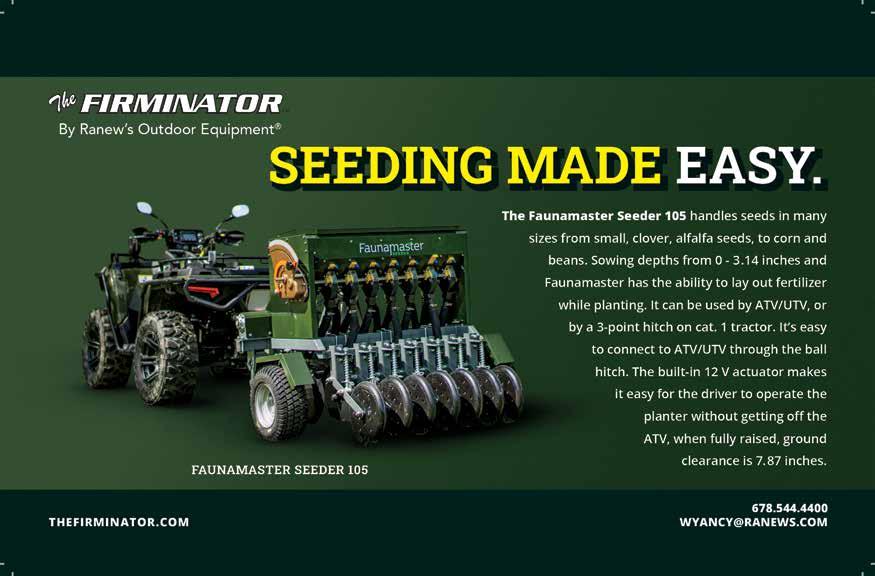
ing point. And you might be blessed and kill your gobbler on the first setup in the plot. However, the hunt could easily go the other way. And when it does, you must adapt and hunt some of the critical areas surrounding your plot. Hunt where that gobbler has been hanging up in the woods.
“Hunting key areas around your food plot is a great way to outsmart the older toms in your area who don’t want to expose themselves in the open,” Atchley said.
By all means, use food plots for turkey hunting, but don’t bank on killing birds in them 100 percent of the time. Look beyond your plot for flats, benches, ridges, thoroughfares and forest feeding areas. You’re still using the plot to your advantage, but you’ll increase your odds of anchoring a clearing-shy older gobbler.
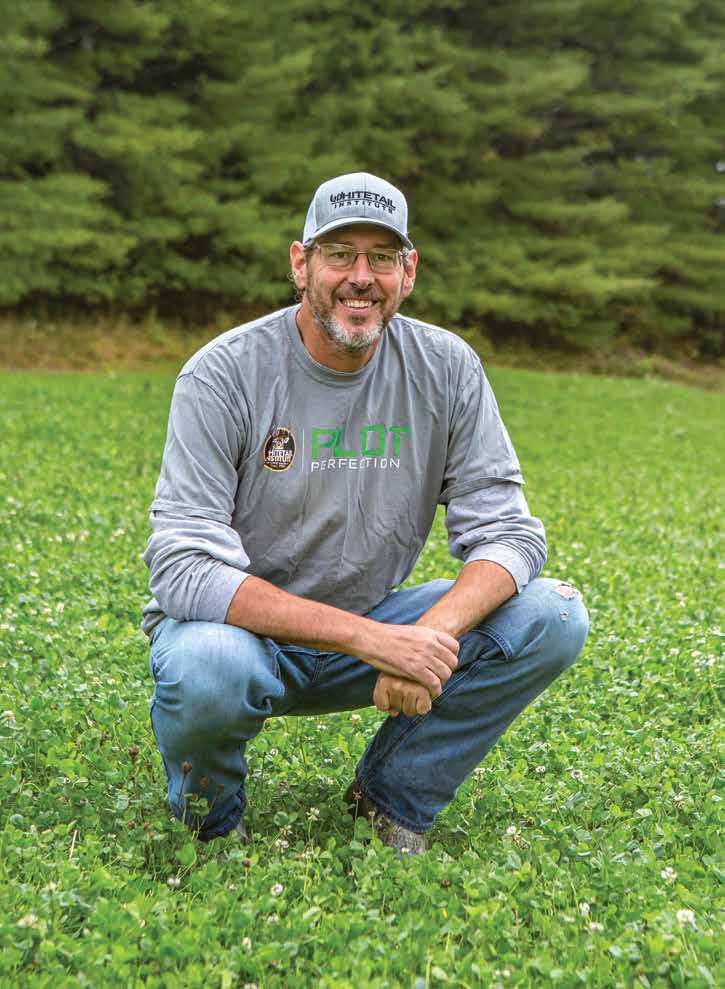
18 Whitetail News | Vol. 32-3
Jason Say
photo
FROST SEEDING FUSION Q& A
Pennsylvania expert Jason Say holds court on this versatile blend.
■ by Scott Bestul
Jason Say is no stranger to Whitetail News. The Pennsylvania whitetail expert and land manager plants dozens of food plots each year, and he’s an ardent believer in Whitetail Institute products. Among his many areas of expertise, Say believes frost seeding — particularly with the popular Fusion product — is one of the most important tools in his chest. We sat down with Say to get better insights on his approaches to this tactic.
Whitetail News: For Whitetail News readers who might not be familiar with frost seeding, how would you define the practice?
Say: “Frost seeding is broadcasting seed — most often clover — into an existing plot during the freeze-thaw cycle that typically occurs in late winter and early spring in the central and northern parts of the United States. It’s been used by farmers for a long time, and in recent years has been picked up by food plotters. Frost seeding is generally thought to be a good way to introduce some new growth into an established plot, as well as fill in bare or thin spots where weeds can establish. Imperial Whitetail Clover is well-suited to frost seeding, and I’ve used it a lot, but the last few years, my go-to seed is Fusion.”
WN: What about Fusion makes it your favorite?
Say: “There’s just something about that combination of clover and chicory that’s very hard to beat. First, I’ve had really good luck getting it to germinate and establish if I time it right. And I’ve always been a huge advocate of offering variety to deer. There are times when they gravitate to the clover and others when they just wear the chico-
ry out. I’m not smart enough to know why they choose what they do and when. I just think deer instinctively know what they need at certain times of year, and they’re also just curious and always sampling different plants to see what tastes good to them. Anyway, I’ve had so much luck with Fusion that I find it hard to go with straight clover if I have a choice.”
WN:When is the best time period for frost seeding in your area of Pennsylvania?
Say:“Of course, it depends on the year and the weather and winter we’ve had, but generally, March is my go-to time. Here in Pennsylvania, that’s when we have that window of freezing nights and thawing days that allow the seed to work down into the soil as it experiences that heaving effect. I think anyone who lives in a similar climate or planting zone would have success at that time.
FUSION
■ Perennial three- to five- year longevity.
■ Available in 3.15 pounds (plants .5 acre) and 9.25 pounds (plants 1.5 acres).
■ A premium food plot mix of Imperial Clover plus the added benefit of exclusive WINA Chicory.
■ Engineered for forage production all year, even during drought conditions in the hot, dry summer months.
“Lately, I hear about more guys frost seeding when there’s snow on the ground. I don’t mind a combination of a little snow and bare dirt, but I think seeding into a significant snow is pretty risky. If you get a significant warmup and melt, you’re going to get a lot of runoff and washing, and to me that’s just a waste of seed that gets blown off the plot. I get it, though. Guys are anxious to get going, and if you do as many plots as I do, time is always an issue. But I’d rather wait for perfect conditions and then really get after it.”
WN: Do you frost seed Fusion at the same rate you would if just establishing a new plot?

Say: “I decide on a plot-by-plot basis. If I have a plot that’s pretty lush already, I just seed at the recommended rate. And by the

Vol. 32-3 | Whitetail News 19
MAX MAXHERBICIDE WHITETAIL INSTITUTE ®
IMPERIAL WHITETAIL
way, even plots that look really good in late summer and early fall can benefit from frost seeding, especially with Fusion, as it will not only give your clover a boost but give more life to the chicory, which is typically shorter-lived.
“On a plot where I know I have bare spots or I know the plot was stressed the year before, by drought or other factors, I’ll go at 1-½ times the normal seeding rate. The same goes for when I’m converting an annual plot into a perennial
one. One of my favorite tactics lately is to plant a new plot to one of Whitetail Institute’s annual products for a year or two and then come in that next spring and frost seed Fusion.”
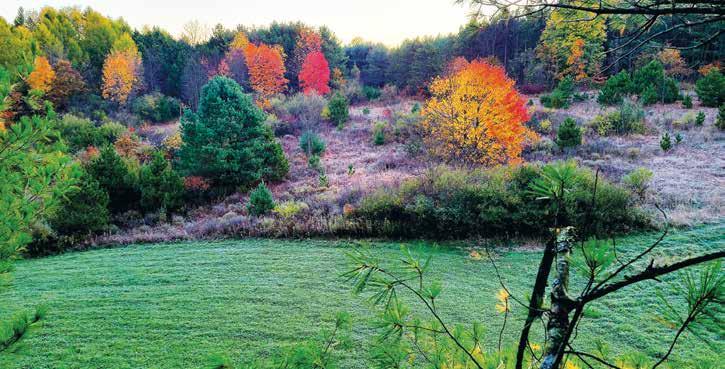
WN: Wait, you’re establishing Fusion plots simply by frost seeding?
Say: “Well, I kind of consider this the new frontier. I’ve been experimenting with it the last few seasons, and right now, I’m at about a 60% success rate. But when it works, it’s absolutely killer.
My typical process is to plant a new plot into something like oats, Beets & Greens or No-Plow for the first two years and then rotate it into a perennial. And since I’ve been having so much success with frost seeding, I just thought, ‘Why not frost seed Fusion in there to get things going?’ and I’ve had many plots where it just worked like a dream. I’d already had the pH levels close to where I needed them, because I’d done my homework on the annual plots.”
WN: How soon after frost seeding will you know how successful you’ve been?
Say: “Typically, by mid-spring, I’ll have an idea of how well the Fusion took in the frost seeding. And assuming you get a good catch, this is a critical time to get a jump on weed control. When the clover is 3 to 4 inches tall, get the sprayer out, and take care of that initial broadleaf or grass growth. And if you’re struggling to identify what kind of weeds you’re dealing with, calling the Whitetail Institute

20 Whitetail News | Vol. 32-3
Jason Say photo
■ Frost seeding Fusion can produce lush, attractive food plots .
makes perfect sense. They have experts on hand who can help you identify the weed and what product to use to combat them, with ArrestMax or Slay herbicides.
“As summer progresses, I typically use mowing to stay ahead of weeds. Lots of guys ask me, ‘When should I mow?’ and my general answer is when the clover is heading out and getting stemmy, or the heads are showing some brown. Two years ago, we had a really rainy sum-

mer, and I mowed some of my plots four times. But I always like to check the forecast and have a reasonable certainty rain is coming soon. Mowing is stressful on clover, and rain is the best remedy. And if the forecast is dry, I don’t even consider it. Last year is a perfect example. We had the worst drought in recent memory, and several of my Fusion plots struggled for much of the summer. Even when we got some rain late in the growing season, I
decided to forgo mowing until the next spring. I wanted that clover to go into winter in the best shape possible.”
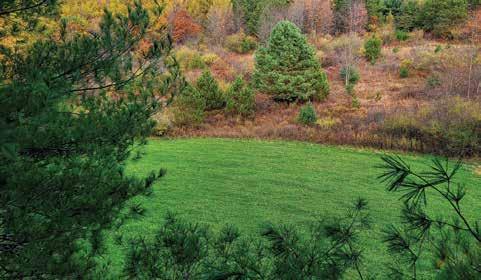
WN: What do you say to plotters who argue that weed control isn’t that big a deal?
Say:“This is another one I hear all the time, and guys like to say, ‘Well deer eat weeds, too.’ And obviously the answer to that is, ‘Of course they do.’ But to me, if you’re going to spend the money to buy a high-quality seed like Fusion, don’t you want it to perform as well as possible? It’s not just a matter of serving up the best nutrition — which is certainly important — it’s a matter of economics. If you treat a Fusion plot right, you can get five to six years out of it. If not, you’re plowing it up and starting over. I guess if you only do a plot or two a year, that’s no big deal, but I plant or maintain 30 plots a year, so economics are important. Plus, I know a weed-free Fusion plot simply offers more nutrition to more deer, so weed control makes sense.”
Jason Say photo
■ Frost seeding Fusion is somewhat of a new frontier, but Say has enjoyed about a 60 percent success rate with the practice.
MEET JODY HOLDBROOKS

WITH WHITETAIL INSTITUTE CONSULTING
This wildlife industry veteran can help you with the management process.
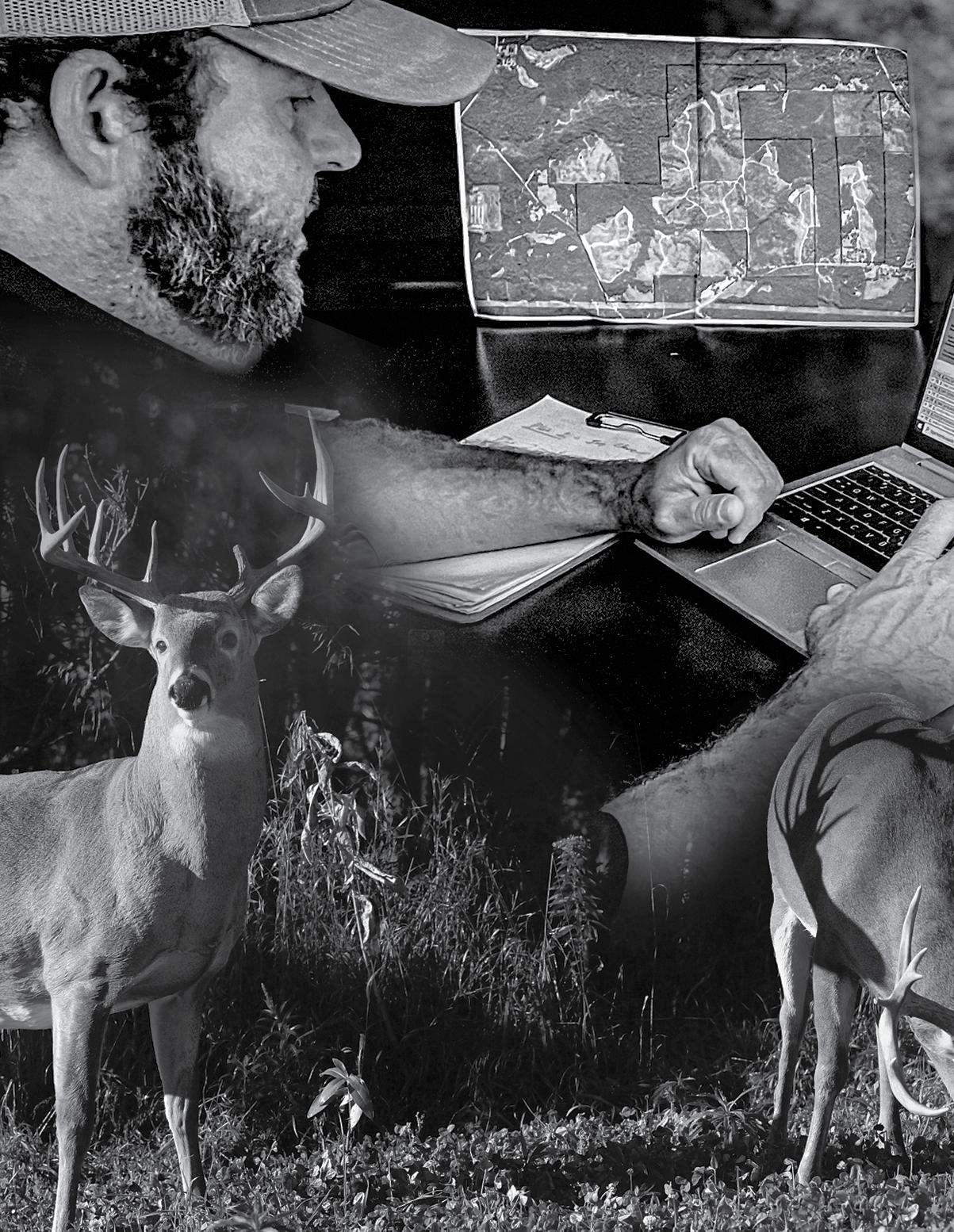 ■ by Jody Holdbrooks
■ by Jody Holdbrooks
22 Whitetail News | Vol. 32-3
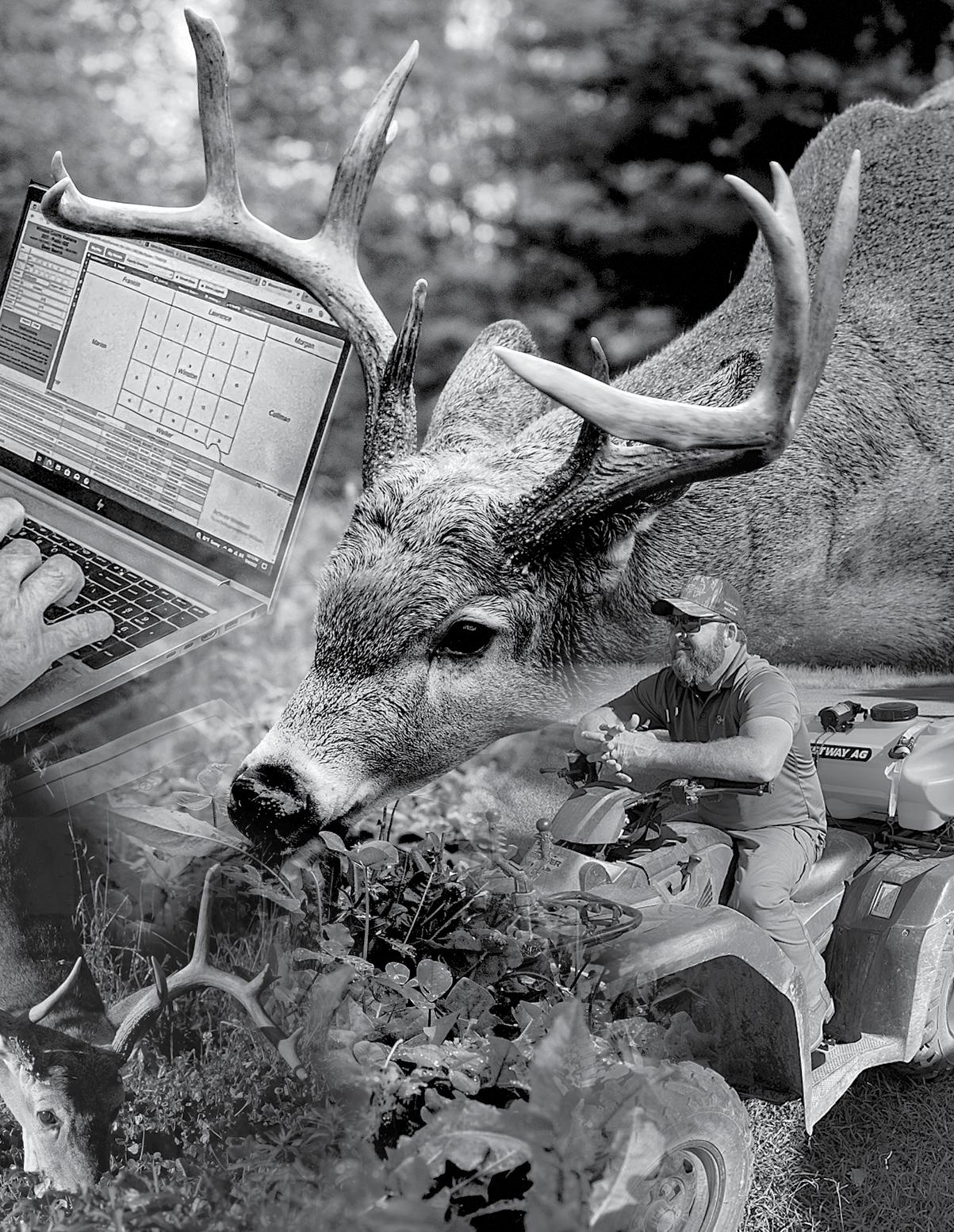
Vol. 32-3 | Whitetail News 23
Bow season is staring us in the face in Alabama, and my food plots haven’t had a sprinkle on them. I’ve seen no bucks on my game cameras of any size. Sometimes, getting everything to work out the way you imagine is not in the books.
Preparation is an important word for any hunter/land manager, but sometimes, no matter how much we prepare, we must rely on luck and experience. That’s why signing on with Whitetail Institute was a no-brainer for me. I cherish working with the researchers who started it all. My first wildlife job out of college was with Whitetail Institute, and I’ve returned to help educate folks and better the brand. We have a great crew here that works solidly as a team.
I have three simple yet important goals for the next few years. First, I want to attend various consumer events, such as deer shows, and promote our products across the country. We’ll also be revising our field tester program. In fact, we’ll test this spring to better our products and work on new products year-round.
Till-Ease Model TP Cultipackers
Testing these products across the country lets us fine-tune blends and select the most attractive, palatable forages. That preserves our success as leaders in the food plot industry. Finally, Whitetail Institute is starting a consulting service that will ensure our customers take their property to the next level.

Shows
After COVID hit in 2020, Whitetail Institute was forced to stop attending deer shows and hasn’t really been on the scene the past few years. We did a few shows in 2022, but we’ll be back in full swing in 2023. Trade shows let me meet land managers and answer questions. We’re excited to get back out and talk with our current customers, but I love to introduce new hunters and managers to food plot basics and get them started. I enjoy receiving calls or seeing them the next year and hearing success stories. And I really love to see food plot managers get to the point when they teach others. We’re here to educate folks and introduce new people to hunting, but
the same can be said for habitat management and deer management.
Consulting and Field Testing
Whitetail Institute will introduce its consulting service, conducting private-lands consulting for food plots and overall land management. We will come to your property, spend the day looking at your land and provide sound management practices to fit your budget. I was hired to start this program and help hunters with land management. During the visit, we’ll study maps and features to maximize your property’s potential. Our consulting staff is unique because of the real-world experience. Consulting team members Dr. Carroll Johnson and Dr. Joyce Tredaway are Ph.D. agronomists and weed scientists who know weeds and soil science at a level that teaches me every time I’m around them. Here’s what will happen when I visit your property.
Soil testing: We’ll take soil samples on your food plots, analyze them and tell you how to incorporate the right amount of lime, phosphorus, potassium,

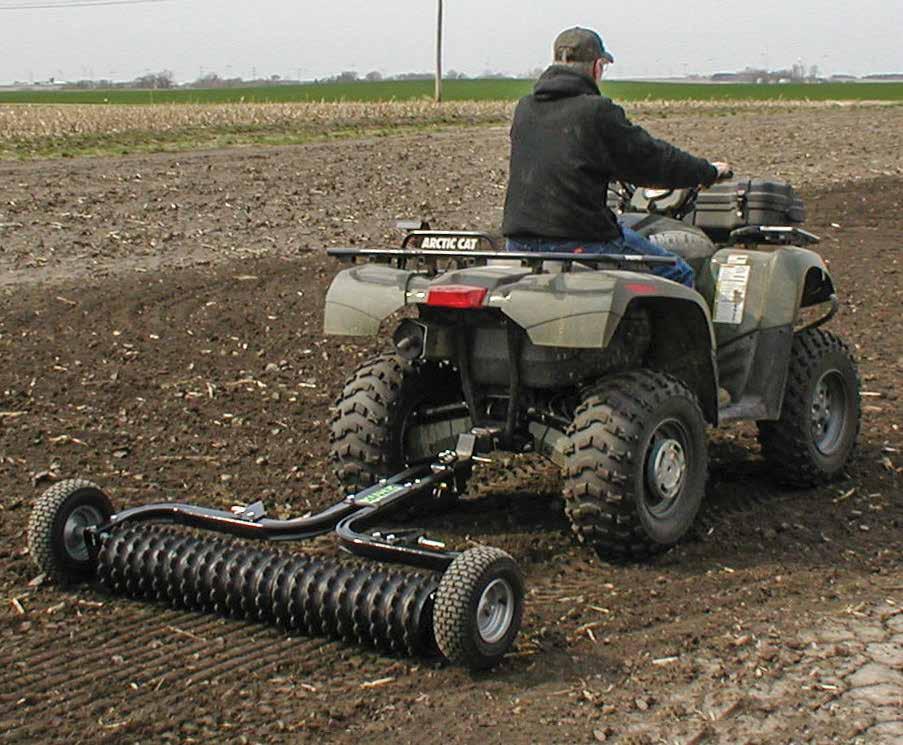
44-Inch & 57-Inch Rough Cut Mowers
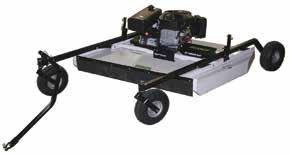

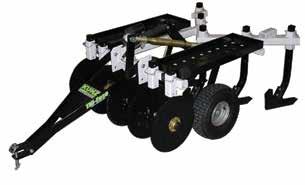

DON’T UNDERESTIMATE YOUR ATV’S ABILITY
• 48”, 60” & 72” wide
models • Individual cast iron packer wheels mounted on a solid shaft. • Can be pulled with an ATV/UTV or
mounted to the 3-point on a tractor
8 inch
Till-Ease 543 Chisel
Cultivator • 19-27 HP electric start engine options. • Deck height adjustment from 2-8 inches.
•
2100 Welland Road, Mendota IL 61342 (815) 539-6954 • www.Kunzeng.com
MAKE A REAL WORKHORSE OUT OF YOUR ATV WITH EQUIPMENT ENGINEERED CORRECTLY FOR ATVS
• Up to
depths, 43 inches wide. • Electric Lift with ATV controls. AcrEase
Plow/ Field
•
Twin blade design for added mulching.
4 tires for added support and close trims. • Rigid shanks for easy penetration in hard ground.
nitrogen and other nutrients that will help amend your soil. We’ll also set your property up on the PlotPerfection app and help you get started with a management plan for your food plots. PlotPerfection is a great tool that lets you store your food plot management info and keep a personal database to log your activities. It’s been a lifesaver for me while keeping up with several properties.
Food plot layout: I’ll give my advice on your food plot locations and sizes. We’ll discuss the best strategies and food plot and stand locations to improve your habitat quality and hunting success.


Timber stands: If you have timber land and recreational property, we’ll examine what we can do to better manage your timber investment to improve wildlife and work with your forester to determine a plan that matches his timber management goals.
Seed recommendations: I will provide forage recommendations for your food plots (after getting results from the soil testing). We will offer a plan with fall and spring plantings that will help you achieve the proper nutrition to supplement natural vegetation and give bucks, does, and fawns the nutrition they require. Again, we’ll examine your soil test and provide exact recommendations for lime and fertilizer on each food plot.


Field testers program: Any property I step on will become part of our prestigious field testers program. You will have the opportunity to test seed and help us decide what passes the tests of palatability and soil tolerance. You will also test seed blends before they hit the market. We would also love to feature your success in the Whitetail News and on social media.
Conclusion
Hunters, land managers and recreational property owners are looking for one thing: better-quality white-tailed deer. We want the preparation we put into our properties to be successful. That can mean anything from a first-time food plotter to the veteran biologist. We want to see the research and hard work produce a trophy buck. Whitetail Institute’s main goal is for hunters throughout the country to have success, and we have the team to get you there. Whether you use hand tools, sprayers, a four-wheeler or large ag equipment, we’re here to get you started and walk with you through the management experience. Contact me at (800) 688-3030 or jody@whitetailinstitute.com. I would love to look at your property and help you take it to the next level.

“
“WHITETAIL INSTITUTE FORAGE CONSULTANTS WILL COME TO YOUR PROPERTY AND PROVIDE SOUND MANAGEMENT PRACTICES TO FIT YOUR BUDGET.”
CELLULAR TRAIL CAMERA 101
Cellular trail cameras can be game changers for deer hunters, but some newcomers go through a learning curve of frustration. Here’s the rundown on cell cameras, optimized settings for extended battery life and real-world examples of how they can change your hunting.
■ by Mark Olis
Cellular trail cameras are the ultimate hightech redneck device. They combine motion-activated cameras with cellular transmission to deliver deer pictures directly to your smartphone and computer. And if that doesn’t raise your eyebrow, some systems have built-in artificial intelligence to automatically sort your images and show you only pictures of bucks, turkeys, hogs or other critters.
Although many hunters have taken the cell-cam plunge — never to return to SD cards again (see the sidebar) — many more hunters stand on the
sidelines intimidated or believing false information. With proper understanding and a few setup tweaks, cellular trail cameras can be the advantage you’ve been seeking.
Why Cellular?
Making fewer trips to a hunting lease or property saves a lot in gas money and also keeps human intrusion out of sensitive habitats where mature bucks bed. Saving money and reducing pressure on your hunting property are reasons enough to try cell cams, but there are plenty of other advantages, too.
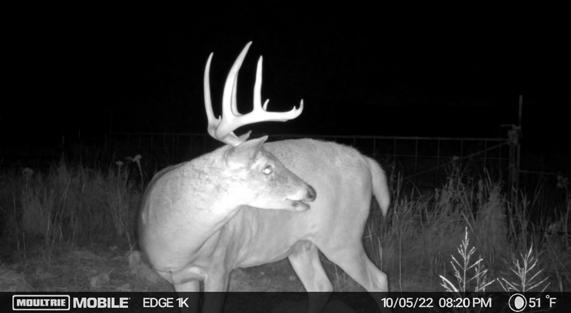
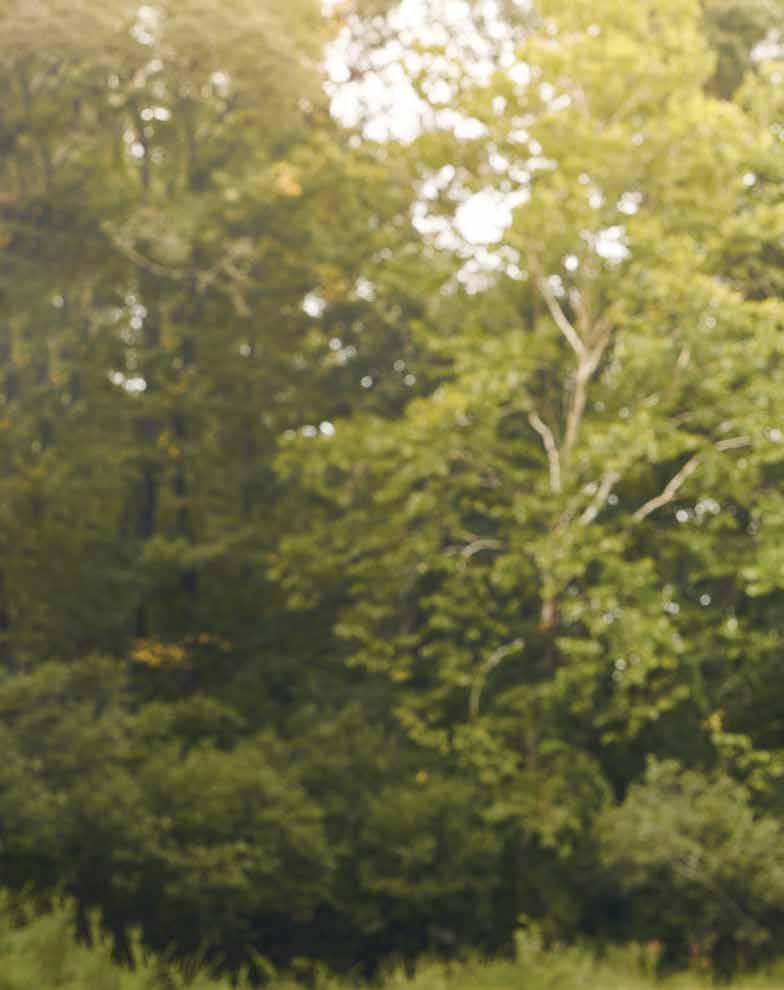
26 Whitetail News | Vol. 32-3

Vol. 32-3 | Whitetail News 27
Cellular trail cams also give you the most recent intel from your property. Traditional trail cameras leave you guessing where to hunt between card pulls, but cell cams let you know which bucks have passed by your cameras recently. This information is invaluable for a hardcore hunter but equally time-saving for the weekend warrior doing everything possible to juggle work, family and hunting time. Instead of guessing where to hunt Saturday morning, a quick app check verifies the area with the most activity, so you can confidently hunt the hottest stands.
Another huge advantage of cell cams is the ability to change camera settings remotely from the app. Imagine sitting on the couch, scrolling through your trail camera images from a hunting lease in another state and wanting to set a one-minute detection delay because only does or dozens of raccoons are coming through. You simply go to your camera’s settings, make the change and hit save. The next time the camera checks in, your new settings will be implemented. This works equally well when switching between photo and video mode, too.
Why Do I Pay a Monthly Fee?
One of the perceived negatives of cellular trail cameras is the monthly cellular fee. Just like a cell phone, subscribers pay a monthly data fee to receive images via cellular transmission. Depending on the plan, the monthly fee can range from $10 to $17 per camera (bundle options are available for subscribers running multiple cell cams). Depending on how far away a hunting property is, and with gas prices anywhere near $3 a gallon, cell cams begin to make a lot more sense financially, too.
Settings For Longer Battery Life
Most new cell-cam users set their cameras to upload images immediately. This means each time an image is taken, the camera connects to a cloud-based server and transmits the image cellularly. The elation of receiving images within minutes of being taken quickly wanes when batteries drain within a week or more. Cell cams perform the same functions as a regular trail cam, but they also have the power-sucking task of sending images via cellular transmission. Although sending 10 to 15 images in one upload doesn’t
burn as much power, the camera connecting to the server is a big power draw. So you’ll save dramatically more on battery life by uploading images one to two times per day instead of every time the camera takes a picture. Plus, a cell camera isn’t taking images during the transmission phase, so you will likely miss a lot more images of deer and other animals when using immediate upload.
Photo only: Cellular trail cameras can also transmit videos to the app. Video is another heavy power user, especially at night, when the infrared flash remains illuminated during the entire video recording process. If a cell cam is set up on an active food plot or bait site, video mode can drain batteries within a week or less (the same is true for regular trail cams). However, if conserving battery life is a major concern, it’s best to use photo-only mode. Using one-shot instead of three-shot burst will conserve even more power.
Solar power cures all: The easiest way to set up a cellular camera for success is to add a solar-power option. If the camera is in an area of direct sunlight for six or more hours, it can be set on immediate

28 Whitetail News | Vol. 32-3
■ Cellular cameras let you make fewer trips to your property, reducing pressure and decreasing gas expenses.
■ Flexible, detailed journal allowing food plotters to keep historical and current information about all their food plots
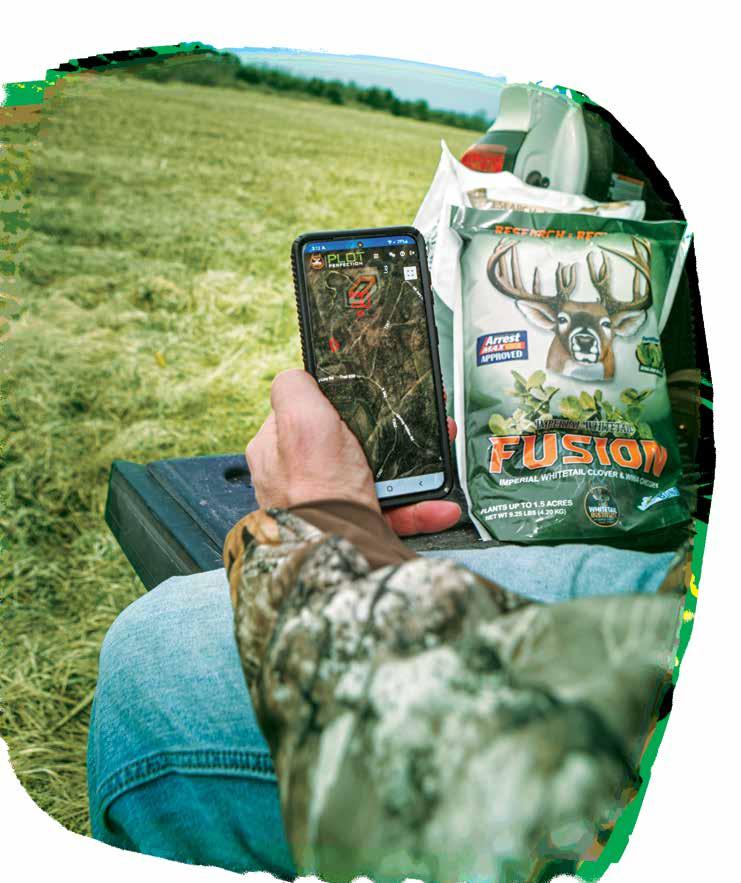
■ Seamless way for users to track food plot work, results, and trends over time
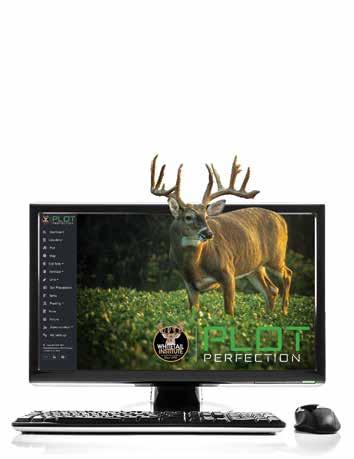
■ Outstanding planning tool for future food-plot tasks
■ Everything from integrated mapping to soil amendment and seeding information
■ Connected to our Whitetail Institute laboratories for easy submittal of soil tests

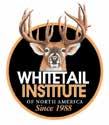
■ Soil test results appear in Plot Perfection

■ One stop shop for all your food plotting needs and a first of its kind app

SUBSCRIBE TODAY! Receive 2 Downloadable Soil Tests FREE value of $23.90 Visit https://plotperfection.com today or call 1-800-688-3030, and begin building your food plot journal. WATCH TUTORIAL VIDEO HERE: Subscribe TODAY at www.PlotPerfection.com
upload, video or any other setting desired. In this environment the camera can be set up and left alone for many months without having to visit it. It’s still recommended to run AA batteries in the camera for backup. You never know when a pesky raccoon or squirrel will decide to pull the plug from your camera, or an extended overcast event drains the external solar battery. If direct sunlight is a problem, there are also external battery options that will greatly extend the run time.
What’s In the App?
Cellular trail cameras operate similarly, but not all apps are created equal. The app is where cellular scouting comes to life, especially if it’s a quality app loaded with useful scouting features. The Moul-

trie Mobile app is one such example, in which the subscriber gets premium features without paying extra. The Moultrie Mobile app is free (cellular data for sending images has a monthly fee).
Moultrie Mobile offers free unlimited cloud storage, where all your images can be accessed 24/7, even if you cancel your monthly subscription. Some apps will charge extra for extended or unlimited storage and will lock you out of your photos after a monthly subscription is canceled. So be sure to read the fine print on what features come standard with the app.
The Moultrie Mobile app has two scouting features that are game changers. The first is species recognition. Using advanced AI technology, the system scans every uploaded image for bucks, does,
turkey, hogs, bears, coyotes, bobcats, people and vehicles, and then applies the appropriate smart tag to those images. By applying the buck smart tag, you’ll only see images of bucks and skip all the does, raccoons and other irrelevant images. You can do the same for turkeys during spring or other game and nongame animals. The person and vehicles smart tags are great for security when monitoring your property or boat. You can even set up phone notifications for individual smart tags to stay alert.
Activity charting is another powerful tool inside the Moultrie Mobile app. Each image that’s uploaded pulls in valuable data, such as time of day and temperature. Activity charting automatically sorts the data and creates easy-to-use graphs showing when peak deer movement is happening on your hunting property. It even lets you drill down to see which cameras have had the most activity with a quick glance. You can also combine smart tags with activity charting and see peak movement for bucks only, or turkeys or any of the species listed. The Moultrie Mobile app even lets you create custom tags for individual bucks. So, when you create a specific tag for a specific buck, you can apply that tag to each image of that deer and use that custom tag inside activity charting to track that specific buck’s movements.
No SD Card Needed
In the past, cellular trail cameras required an SD card, and the camera was specific to one cellular carrier. That changed with the Moultrie Mobile Edge cellular camera. With 16GB of built-in memory, the camera doesn’t use an SD card, which not only saves the user money up front but also eliminates all the issues associated with SD cards: the wrong type of card, lost SD cards, corrupted files and the need for formatting. The Edge also features Auto Connect technology, where it searches for the strongest cell signal in the area regardless of the carrier. So there’s no more choosing a Verizon-only camera and worrying if it will work in a new hunting location. Simply turn on the Edge, and it finds the best signal for you. And with an MSRP of $99, it makes it tough to not take the cell-cam leap. When you go cellular, there’s no turning back. Check out the Edge camera at www.moultriemobile.com/cameras
The Moultrie Mobile app also includes a robust weather section that shows current, hourly and daily forecasting for your area, complete with wind-direction arrows and sunrise and sunset times for easily gauging legal shooting time. Combine that with interactive mapping that lets subscribers drop 20 pins for cameras, stands, food sources, bedding areas, rubs, blood trailing and many more.
Learn more about Moultrie Mobile and cell cameras at www.MoultrieMobile.com.
30 Whitetail News | Vol. 32-3
“
“CELLULAR TRAIL CAMERAS OPERATE SIMILARLY, BUT NOT ALL APPS ARE CREATED EQUAL. THE APP IS WHERE CELLULAR SCOUTING COMES TO LIFE.”
RESEARCH EQUALS RESULTS
IMPERIAL WHITETAIL ANNUALS

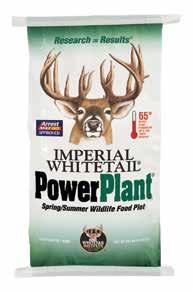

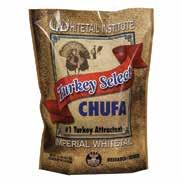


Whitetail Institute annuals produce high-protein tonnage for antler growth, unmatched attraction during the hunting season and sustained production in winter months. Each annual is expertly developed to match your specific needs. Includes seeds only available in Whitetail Institute products.


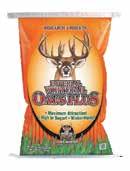

Still the leader since 1988

WHITETAIL INSTITUTE 239 Whitetail Trail, Pintlala, AL 36043 • 800-688-3030 • www.whitetailinstitute.com
■ A deer manager should never have to complain about too much free time or being bored. Slip on a pair of work boots, grab some gloves and get busy on a project.

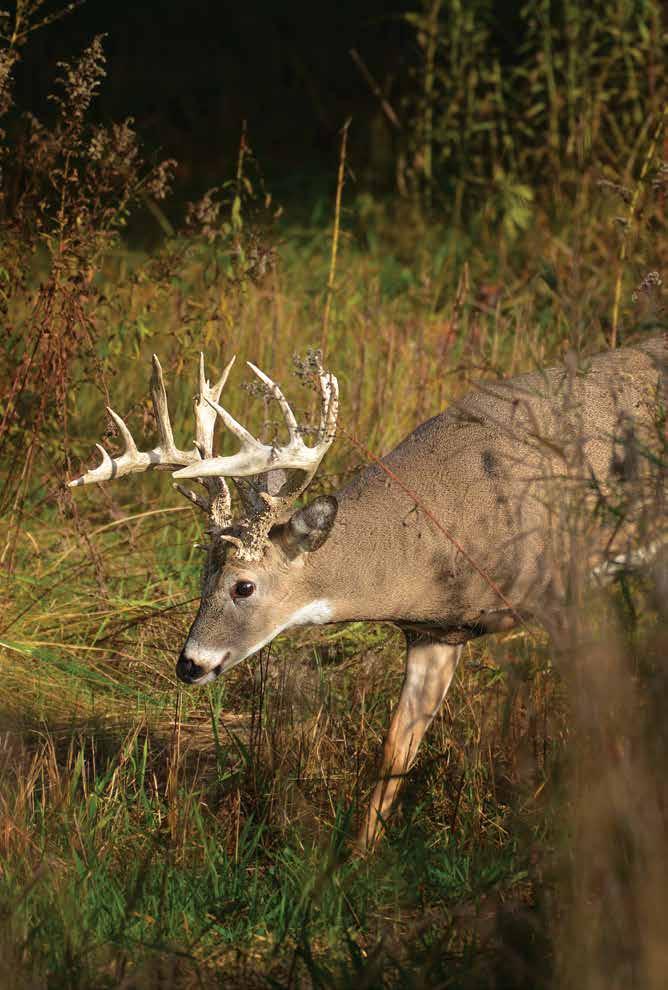
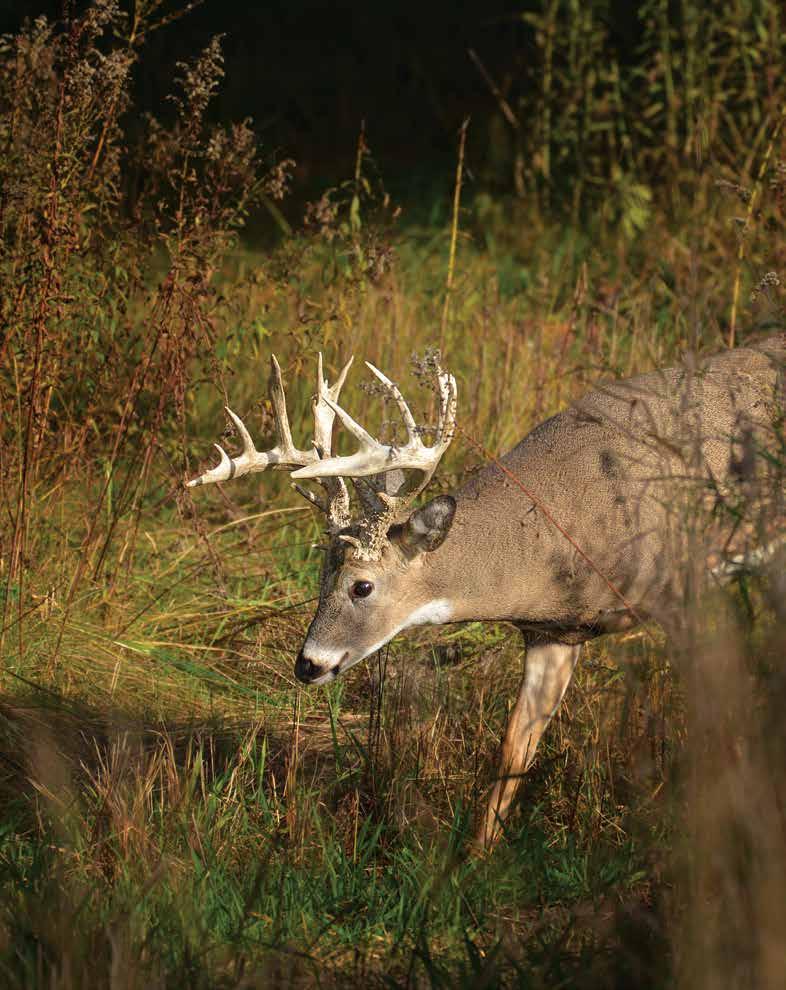
32 Whitetail News | Vol. 32-3
12 PROJECTS TO HELP WHITETAILS

You can always do something to improve your property. Try these suggestions to get your hands dirty, help deer and boost hunting success.
■ by Gerald Almy
For deer managers, taking care of and improving our properties is a labor of love — an all-consuming hobby and a passion that runs deep. You’ll probably identify so many projects to enhance deer habitat that time is the only constraint.
Between family, work and social obligations, it’s sometimes difficult to carve out hours to devote to deer properties. But we must squeeze out that time — for the deer, the land and the sense of fulfillment that comes from each improvement to the woods and fields.
Most food plotters are happiest when doing something to enhance the land, whether it’s removing noxious weeds, creating a water source or planting a food plot. We’re never really caught up.
It’s a continuous process. When you have a few hours or a spare day off, here are 12 projects you can undertake to improve the land, the deer and your hunting success.
Although some of these and similar projects might seem small and somewhat insignificant, improving a property for deer and other wildlife occurs one step at a time, one goal at a time. Some might take an hour, others a few days. Some might be continuing and never conclude. But a wildlife manager should never lack for something productive to tackle, whether you own the land or lease it. Here’s another reward I’ve experienced by tackling these tasks: The more you undertake and complete, the more mature bucks will want to call your property their year-round home.
Vol. 32-3 | Whitetail News 33
SPEND MORE TIME ON WHAT’S IMPORTANT
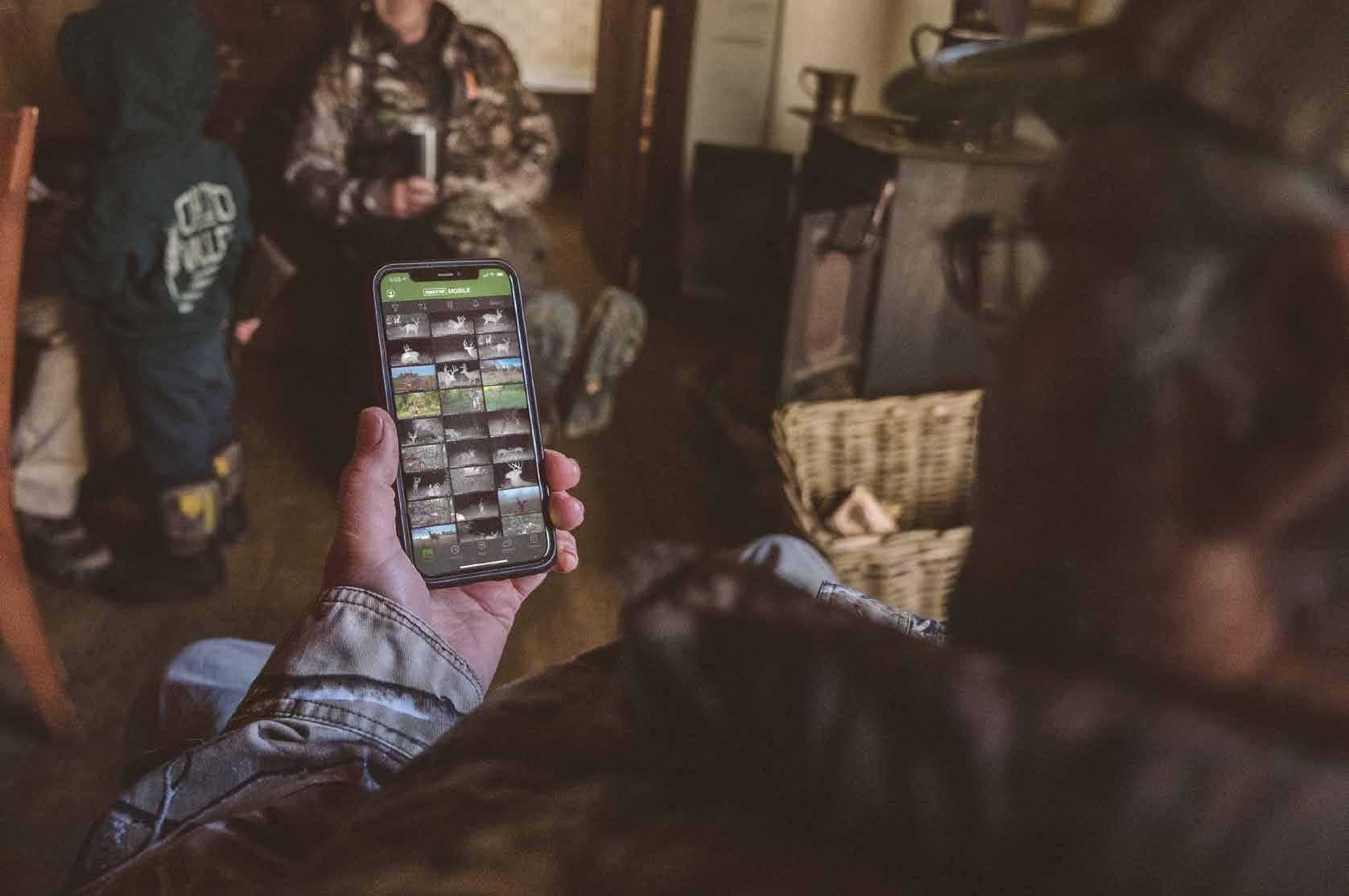
FOR MORE THAN 20 YEARS, hunters have had to accept that almost half of their trail cam photos are useless blanks caused by wind, harsh light, or non-target critters like raccoons and squirrels. We call these unwanted images False Triggers and they are a waste of your time, money and battery life.







The new Edge Pro by Moultrie Mobile introduces the industry’s only False Trigger Elimination (FTE) technology. FTE eliminates up to 99% of false triggers with up to 96% species accuracy. This means if deer photos are what you want, deer photos are what you get.




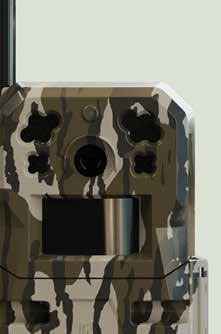

EDGE
OTHER
EDGE
WITH
ELIMINATES
TO
OF
To learn more about Edge Pro and our industry first FTE technology visit: MOULTRIEMOBILE.CO M / TRIGGERED
PRO
CAMS
PRO
FTE
UP
99%
FALSE TRIGGERS RESEARCH SHOWS THAT UP TO 46% OF CELL CAM PICS ARE FALSE TRIGGERS
Replenish or Create New Mineral Licks

Deer cannot obtain the quantity or variety of minerals and vitamins they need from a regular diet of natural browse, food plots and agricultural fields. Fix that by creating mineral licks or reactivating ones you already have. (Always check state regulations to make sure putting out minerals is legal.) If you don’t offer deer vitamins and minerals, chances are they will head to a neighboring property that has them.
Bucks can store phosphorous and calcium they obtain from Imperial Whitetail 30-06 in their skeletal system and then use it for antler growth during summer. The Whitetail Institute’s mineral vitamin mixtures were developed for the needs of deer, not cattle, sheep or hogs.

I like to create one lick for every 40 to 50 acres, placing them near heavy cover to encourage mature buck use. Make
sure you locate them in well-drained areas that won’t get saturated and hold water after a rain, letting minerals leach out. Break up the ground with a shovel, and mix in 20 to 40 pounds. Work the minerals approximately 6 inches deep into the soil. If you already have licks, pour on about half that amount, and mix it into the dirt with a shovel or hoe. If a lick has been hit hard and is severely depleted, add the full 20 to 40 pounds to rejuvenate it.
Build a Water Source
Bucks might love your food plots, but if you don’t have a water source, they’ll likely travel to your neighbor’s land to find one. Water sources can mean anything from a $5,000 pond built by a contractor to a dam on a small creek you made with a few hours of hand labor.
I’ve built several small water sources
from livestock feeding bins and children’s pools by digging the ground out and back-filling around the edges. You can also dig down until you hit clay and let rain fill the hole, or place pond liner material in it. An even simpler way to provide water year-round is to use rocks and logs to create a dam on a wet-weather stream that would otherwise run dry in summer. Cost: a bit of elbow grease.
Plant a Vegetation Barrier to Block the View of Your Plots
A barrier can hide your plots from roads and neighbors. You can use white pines, native warm-season grasses or a faster-growing product such as Conceal to create a shield that blocks the view of your plots. These screens also serve double duty by making deer using the plot feel more secure and encouraging them to enter it earlier in daylight.
36 Whitetail News | Vol. 32-3
“
“WATER SOURCES CAN MEAN ANYTHING FROM A $5,000 POND BUILT BY A CONTRACTOR TO A DAM ON A SMALL CREEK YOU MAKE WITH A FEW HOURS OF HAND LABOR.”
Set Aside a Sanctuary
An area where no hunting or human activities are allowed will go a long way toward making mature bucks use your land all year. The more thick, rough, swampy, briar-infested or steep it is, the better. The only time you should enter it is to retrieve a wounded deer. Map out the best sanctuary by using a topo map with satellite photo study, along with your knowledge of where the thickest, most rugged areas are.
If other hunters use the property, place paint marks or ribbons to delineate its borders. Sanctuaries are only as good as the lack of pressure they receive. Make sure everyone using the property respects them.
Daylight Woods Plots
When you plant small kill plots in forested habitat, you probably cut back tree branches surrounding them and even fell a few trees to open the area to sunlight. But through time, those will grow back and shade the plot, reducing forage production. Cut back overhanging branches to allow at least four hours of sunlight to reach the plot each day.
Overseed Bare Spots in Plots
Before weeds get a chance to fill in bare spots in a freshly planted plot, go back after the forage emerges and reseed areas your spreader missed. Take this step as soon as your plots emerge and get a few inches tall. Often, you’ll find the areas near the edges have some gaps and a light crop, or maybe where the tractor and spreader made a tight turn. If you don’t re-seed those spots, weeds will fill them for you. When that happens, the forage will have to compete with unwanted vegetation for moisture and nutrients in the soil, reducing its potential to nurture quality deer.
Clear a New Spot for a Food Plot
Use chainsaws, bush hogs, weed eaters, glyphosate, tillers or whatever it takes to get a raw piece of ground ready for planting. When rocks and branches are removed and weeds have been eliminated, you’ll have the site ready to create another food plot. You can take it a step farther by doing a soil test, amending the dirt with the necessary fertilizers
and lime, and then tilling the site several times to get a smooth firm seedbed.
Improve Native Forage
Deer will never feed exclusively in food plots for all their nutrition needs. That means you should enhance and protect important natural foods on your property. Everyone’s land will have different native browse, but some species are common throughout large parts of the country and beneficial to deer. Protect or enhance these natural foods, such as greenbrier, blackberry, grape, plum, honeysuckle and various other edible shrubs. Fertilizing these native plant species will improve forage quality and produce more foliage.
Clear Out Low-Value Trees
Low-value trees and branches often shade high-quality foods. Clearing them lets more daylight reach a plot. Fertilizing can help increase their production, doubling the protein they offer in certain cases. And if some of those vines are 10 feet high, pull them down lower where deer can reach them.
Some trees, such as red maple, provide little food for whitetails when they’re tall. But if you cut them down or hinge-cut them, myriad shoots will sprout at the cut, providing valuable forage. Make sure you cut them about 2 to 4 feet high to make the new browse accessible to deer.
Feather a Border Between Woods and Fields
Deer don’t like to step straight out from mature woods into an open field. Give them a sense of security and extra browse by hinge-cutting some low-value trees along the border. Also, plant a few shrubs, such as blackberry, chinquapin, Chickasaw plum or red osier dogwood, which offer food and cover.
Create a Thermal Refuge
When the wind blows hard from the north, and snow and ice pelt open stands of hardwoods, deer will flock to a thermal refuge. Take time to create one so it’s ready when they need it during the heart of winter. The size can be one-half to several acres. Locate it near the center of your land.
If you’re lucky, the property might already have natural stands of young fir, pine, spruce or cedar that offer deer shelter from the wind and hold air that’s usually several degrees warmer than in an open hardwood forest. If you don’t have such areas, it’s time to plant at least a quarter-acre. White pines are my favorite, but other species also work well.
Evergreen trees also offer great escape areas during gun seasons and a sense of seclusion and security to mature bucks. Besides planting the conifers, cut down a few deciduous trees or scrub cedars to provide extra wind-breaks and structure near which deer can bed. A downed tree makes a perfect spot for a buck to bed next to, especially when surrounded by thick young evergreen growth.
Spruce Up Small Kill Plots
If leaves fall on your woodland kill plots before the seed germinates or right after on the seedlings, use a leaf blower to remove them. Or use a quieter rake if the plot is near buck bedding cover. Fallen leaves can smother seedlings. Also, pick up rocks and sticks, which can reduce plot output and damage equipment the next time you work the ground. Bring a bag of seed, and add to any bare spots you discover after you blow off the leaves.
Release Fruit Trees and Your Best Oaks from Competing Trees
Cut down competing trees inside the crown line of your best acorn producers, and pear, apple, crabapple and persimmon trees. Removing competing trees is beneficial, letting remaining trees obtain more nutrients and moisture from the soil.
Conclusion
Those are just a few of many small projects you can do to improve your deer property. One thing I know is certain: A deer manager should never have to complain about too much free time or being bored. Slip on some work boots, grab a pair of rugged gloves and have at it.
After I finish this article, that’s exactly what I plan to do.
Vol. 32-3 | Whitetail News 37
■ by Gordy J. Krahn
dam Hays III has a knack for finding and killing the biggest whitetail bucks in the neighborhood — any neighborhood. In fact, he has dozens of Pope and Young bucks to his credit, including 10 that surpassed the 170-inch mark and four monsters that broke the 200-inch barrier.
BREAKING THE 200-INCH BARRIER A
Like most hunters who target specific trophy-class bucks, he is driven by a passion to match wits with the most formidable adversaries in the woods — those reclusive veterans of several deer seasons that most hunters never see. And what sets him apart from more casual, less skilled hunters is his determination and methodical approach. His consistent success is the product of year-round scouting, proper land management and stand placement, and zeroing in on a specific buck only when the moment is perfect. Hays is a deer hunter’s deer hunter.
Hays owns and produces Team200 TV, which can be viewed on the Pursuit Channel and Waypoint TV. The object of the series is to educate hunters and give them the means to target and kill the most mature animals in their area— regardless of species — and to be successful season after season.
“The Team200 show was born from my own personal goal of hunting the biggest whitetails in North America,” Hays said. “I can honestly say that after chasing the most incredible animal in the woods for four decades now, the addiction is stronger than ever. The 200-inch buck is what dreams are made of. It is the benchmark of whitetail hunting.”
In addition to Team200 TV, Hays has also continued the work of the late Jeff Murray, who pioneered MoonGuide, a tool hunters can use to determine the best days, times and locations to encounter mature bucks on their feet during daylight months in advance. It’s ideal for pre-season scouting, scheduling time off work or planning out-of-state hunts. After using the MoonGuide for almost two decades, Hays credits this lunar hunting tool for his success in zeroing in on giant whitetails.
We caught up with Hays as he was preparing for another hunting season and picked his brain about his recipe for success. It comes as no surprise that it’s the product of hard work

38 Whitetail News | Vol. 32-3
Adam Hays is driven to kill big bucks — something he does with uncanny regularity.

Vol. 32-3 | Whitetail News 39
and an in-depth knowledge of mature buck behavior. Targeting big bucks requires dedication and determination — and a well-thought-out game plan. His success speaks for itself.
WI: Can you tell us about your hunting background? How did you get into the whitetail game? Where are your home stomping grounds? Do you still spend a lot of time hunting there?
Hays: “My father was a bowhunter and had me shooting a bow when I was 4 years old, so it was meant to be. I just don’t think he ever thought I would turn it into a career. I was born and raised in central Ohio and got my start in the hill country of southeastern Ohio. But for the past 20 years, I’ve focused my efforts closer to home.”
WI: Talk about your involvement with Team200 and MoonGuide.
Hays: “I started Team200 10 years ago after producing shows for manufacturers for the past 20 years in the archery industry. I worked for Skyline Camo
and Lone Wolf Tree Stands, helped start and produce Whitetail Addictions and worked for Tom Miranda and help start [the TV series] Dominant Bucks. I’ve been using the MoonGuide for more than 20 years and bought the company close to 10 years ago after my good friend Jeff Murray, who was the inventor of MoonGuide, passed away.”
WI: It’s one thing to kill big bucks in your own backyard, but you have a knack of finding them wherever you hunt. How is that possible?
Hays: “Lots of year-round scouting, and I have hunted the same areas in Illinois and Kansas for almost 20 years. It helps having an intimate knowledge of the areas.”
WI: It’s been said that you live and die by the moon — that it’s the biggest influence on your success. How do the moon phases affect on the way you hunt?
Hays: “Correct. I believe the wind,
moon and weather affect mature deer movement, in that order. It’s not really about the phase of the moon. It’s the gravitational pull of the moon and the handful of days each month when it lines up with primetime.”
WI: Talk about your philosophy regarding property management and food plot, cover and hunting stands strategies. How does this mesh with the surrounding landscape — agriculture, big timber, neighbors — and how does this apply to your hunting strategy, especially when it comes to tagging mature whitetail bucks?
Hays: “I’m all about ultra-low impact — providing food in the right spots where I can capitalize on feeding patterns early and late, and staying out of the area until everything is on my side — even letting surrounding [hunting] pressure push deer into my spots. The hardest part of hunting big deer is not
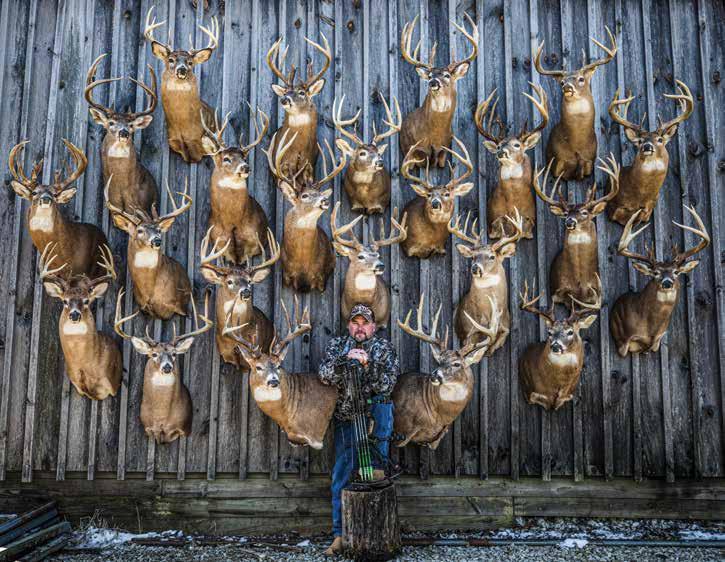
40 Whitetail News | Vol. 32-3
■ Adam Hays has dozens of Pope and Young whitetails to his credit, including 10 that scored more than 170 inches and four that topped the 200-inch mark.
Scienti
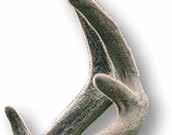









RESULTS RESEARCH EQUALS















































IMPERIAL WHITETAIL Perennials

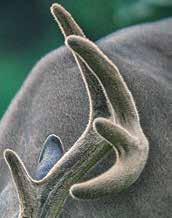
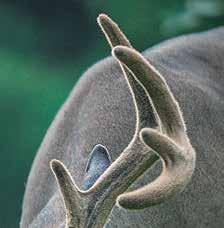




















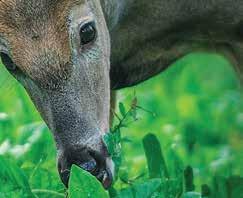
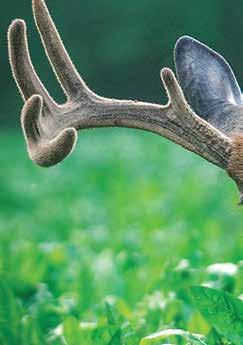
Still the leader since 1988

cally designed to attract and
bigger
proprietary
Whitetail Institute agronomists.
grow
deer. Includes
seeds developed by
Designed to last up to ve years from a single planting.
WHITETAIL INSTITUTE 239 Whitetail Trail, Pintlala, AL 36043 • 800-688-3030 • www.whitetailinstitute.com
hunting them until everything is just right.”
WI: How vital is proper land management and specific stand placement when targeting mature whitetail bucks?

Hays: “It’s vitally important. Deer have to eat, and providing what they need when they want and need it is crucial. The only thing that’s more important is your stand placement.”
WI: Talk about how Whitetail Institute products play a part in your food plot strategy.
Hays: “I’ve used Whitetail Institute products for 20 years and have never had a reason to change. They always perform, and I’ve witnessed firsthand what a deer’s antler potential can be using these products.”
WI: Do you have a favorite?
Hays: “Imperial Whitetail Clover is my favorite. It provides quality forage year-round for the deer in my area.”

WI: You travel a lot to hunt and see a lot of the various destinations and habitats where whitetails hang out. What have you noticed about other hunters’ and outfitters’ approach to food plots, good and bad?
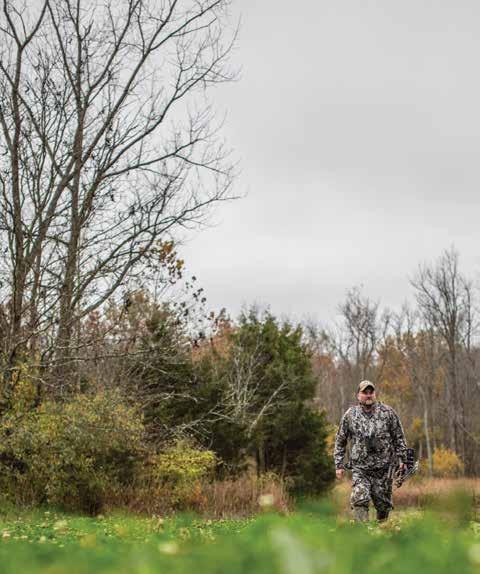
Hays: “I think a lot of people overmanage their property — holding the 95 percent of the herd they do not want to kill, and the neighbors kill all the big bucks. I prefer more cover and less food. You have to have better cover than the neighbors if you want to hold the biggest bucks, but you have to have the best food plots as well. It’s a fine line.”
Imperial Whitetail Clover — Deer Candy
Feed them and they will come. Give them everything they want and need, and they will stay. Food plots provide the deer candy that reinforces the premise that this is a great place to hang out — that it provides essentials for a good life. On the micro level, placement of food plots determines the best locations for tree stands and ground blinds to ensure landowners and hunters get the greatest return for their efforts come hunting season. Those who want to maximize the attraction power of their food plots put considerable thought into the seeds they sow and how they care for the plants. The goal, of course, is a healthier deer herd and increased hunting opportunities. For Adam Hays III, Whitetail Institute’s Imperial Whitetail Clover is a critical ingredient in his deer management efforts. Containing the only clover that’s genetically designed for whitetail deer, this perennial food plot planting has an extremely high protein content — critical for antler, muscle and bone growth. It thrives in extreme cold as well as warm, dry climates, and deer love the taste and will travel long distances to feed on it. It’s coated with RainBond for enhanced seedling survivability and lasts up to five years from one planting. For more information, visit www.whitetailinstitute.com.
WI: You have an impressive hit list of mega bucks to your credit — a handful that topped 200 inches. What accounts for your success when it comes to targeting huge bucks, and what drives you to seek out these monsters?
Hays: “I enjoy deer hunting, and I love hunting specific bucks. Matching wits with a smart old buck is a challenge that never gets old for me. There is nothing like it. I think my success comes mainly from extensive scouting, hunting winds good for the buck I’m after (giving him the wind to his advantage), and stacking the deck in my favor with the wind, moon and weather before I will go in and hunt. It’s hard for most guys to be that patient and not hunt until everything is perfect, but nine times out of 10, I get it done the first time I go in.”
WI: Do you target specific bucks? What does your scouting look like?
Hays: “That is all I do. It requires lots of post-season scouting and in-season, long-range observation.”
WI: You film your own hunts. How has this changed the way you hunt?
Hays: “It’s really made it more difficult — more gear, more movement, and it has cost me some giants over the years.”
WI: Is there a buck that stands out as your most memorable?
Hays: “The biggest buck I’ve ever seen in the wild was in Alberta, during early November. He followed a doe in at daylight and bedded down 45 yards away. I watched him for three hours before I finally got a shot — and I blew it. His sheds were 220s the year before, and we estimated him somewhere in the 230- to 240-inch range — all captured on video.”
WI: Do you have a favorite big buck destination?
Hays: “I love Ohio, Illinois and Kansas, but Alberta will always have a special meaning to me because of that giant buck that got away.”
WI: What’s on the horizon for you?
Hays: “No big changes; still chasing those elusive 200-inchers.”
42 Whitetail News | Vol. 32-3
WHITETAIL INSTITUTE IMPACT
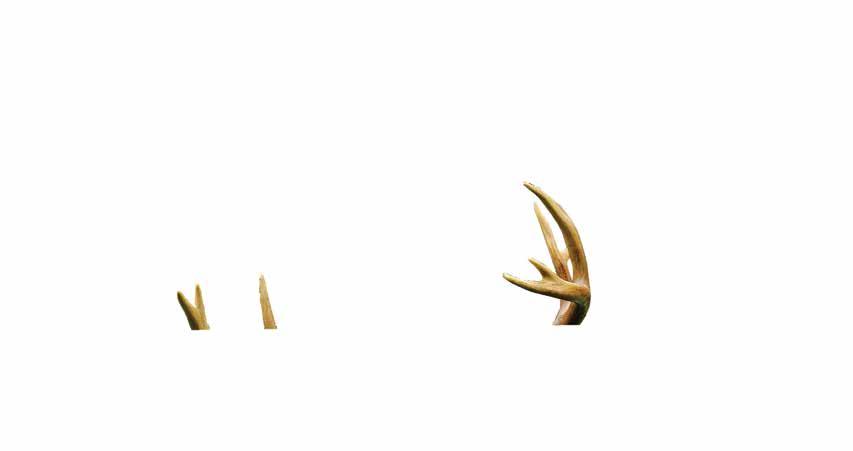


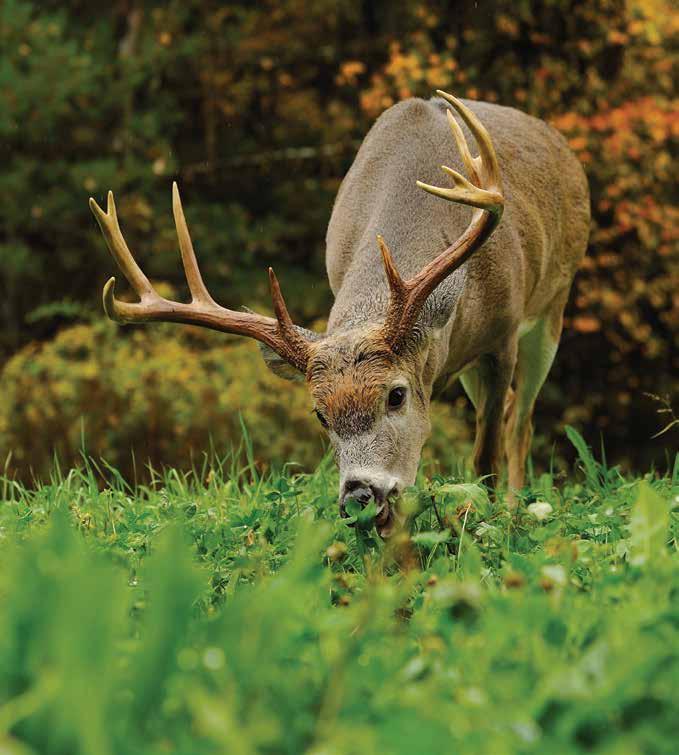
Impact is the next generation soil amendment that releases nutrients and feeds forages in lower pH soils. Turn poor soil or hard to access plots into productive food plots.
Still the leader since 1988

WHITETAIL INSTITUTE 239 Whitetail Trail, Pintlala, AL 36043 • 800-688-3030 • www.whitetailinstitute.com
START ’EM YOUNG
Most folks know the basics of managing for big bucks, but keeping fawns thriving is critically important to the long-term health of your herd.
 ■ by Matt Harper
■ by Matt Harper
44 Whitetail News | Vol. 32-3

Vol. 32-3 | Whitetail News 45
If you considered the University of Alabama, Duke University and the Chinese Olympic ping pong team, what characteristic ties them together? All have been dominant in their respective athletic programs, consistently at or near the top year after year.
The word commonly used for such success is dynasty. To be considered a dynasty, a team or organization must consistently be at the pinnacle of its endeavor and continually rise above its contemporaries. Teams that have an exceptional season or even two or three consecutive years of success do not constitute a dynasty. The key is to develop a program that produces wins even when personnel changes. Great players come and go, and without equal or better replacements, dynasties are not born.
Dynasties also exist in the hunting world, and I’m not talking about some superstar who travels the world collecting exotic trophies or a celebrity live-streaming the newest face paint. The dynasties I’m referring to are those coveted properties that seem to produce monster bucks year after year. You know the properties I’m talking about — the ones where you bemoan the first pictures of velvet-racked bucks from the lucky guy who hunts that place. But those properties don’t evolve by luck or destiny. Multiple factors result in a perfect buck growing paradise. Food, cover, herd density, hunting pressure and age class are parts of the equation, but there’s one critical piece that must be present: A new crop of future taxidermy debt makers must be managed and cultivated to assure the big brute flow is maintained.
A few years ago, I had a bad case of epizootic hemorrhagic disease at a couple of my farms. It wiped out most of the 3-year-old and older bucks, and for the next three years, finding a mature buck was difficult. There’s not much you can do about disease, but good practices and considerations can help ensure your young buck farm team is strong.
The Doe Herd
The success of a fawn crop is directly related to the health and productivity of the doe herd, and that starts long before a fawn is born. When the rut is in full swing and crazy people like me are waking up early and staying up late, there’s
also a critical step occurring in the journey to next year’s fawn crop. I’m talking about conception, and although hunters fixate on lusty bucks, nature is preparing for next spring. Does in poor condition are less likely to “take” after breeding.
Take means a fertilized egg becoming an embryo and then blastocyst, and successfully implanting in the uterus. Although a doe must be in fairly poor condition for conception to be unsuccessful, it can happen and might at least take multiple cycles, which, if eventually successful, will lead to late-born fawns.
But simply having a prenatal fawn growing inside a doe’s womb does not guarantee high birth rates or fawn survivability. If a doe is in poor condition during the first couple of trimesters of gestation, she’s far more likely to reabsorb the fetus or abort it. Poor body condition can be caused by illness or extreme conditions, but it usually relates to the quantity and quality of food. Bad conditions and sickness can often be overcome if adequate quality food is available. When does enter the final trimester, massive fetal growth begins to happen. In fact, most fetal growth occurs in the third trimester, which draws greatly on the body of the doe. Two things can happen, independently or in tandem. Without adequate nutrition to support rapid fetal growth, a doe’s body condition can suffer greatly and even to the point that when she gives birth, the mammary system cannot produce enough milk to support her fawn(s). That will lead to decreased fawn growth and vigor, and often results in the death of one or more of the offspring.
The other possibility is that fawns are born at a lower-than-normal birth weight. Whitetail fawns are typically about 7 pounds at birth. If a fawn has a birth weight of 4 pounds, it’s far less likely to survive even the first few days or hours after birth. That fawn simply doesn’t have the strength to nurse, evade predators and live in the harsh environment in which it was thrust. If decreased milk production and low birth weights occur, there’s little chance the fawn(s) will survive. In fact, fawn abandonment is a common natural scenario if one or both of those factors are present, especially in younger does.
Finally, poor doe body condition often leads to fewer multiple fawn births
or multiple fawn early survivability. Prenatally, a doe in poor body condition carrying twins or triplets often absorbs or aborts one or more of the fetal fawns. That will normally occur earlier in the pregnancy, but if carried to parturition, one or more of the future offspring might grow less, resulting in one fawn born at a normal birth weight while one or more of its siblings are born at a subpar weight.
Regardless, any of those situations lead to a decreased live fawn recruitment number. One of the data points wildlife professionals often examine is the number of early survived fawns per doe, as it indicates the overall habitat capacity as it relates to herd density.
As mentioned, the proficiency of doe lactation plays a major role in early fawn survivability, but it also plays a critical part in maximizing the first few months of fawn growth. For the first few weeks of life, a fawn depends on the milk supply from its mother, and it’s not until three months, plus or minus, that a fawn has a sufficiently functioning rumen to make it on vegetation. Fawns require nutrient-rich milk to support rapid growth. Deer milk is far more nutrient-dense than cow milk, particularly in fat and protein, and it also carries high levels of minerals. Density alone, however, doesn’t guarantee maximum fawn growth. The quantity of milk a fawn receives is also important. The nutrient configuration of doe’s milk does not change with her nutritional plane, but the quantity she produces is directly affected by diet. That is, if a doe is in poor body condition or lacks proper nutrition during lactation, she will produce less milk, resulting in stunted fawn growth. That will dramatically decrease the likeliness of fawn survivability and, at least, results in stunted growth.
The First Year
After weaning, fawns depend on the availability of high-quality food in their environment. Just because a fawn is not nursing doesn’t mean the nutritional needs decrease. Rather, fawns must get them from a different source. Fawns are still growing rapidly, so their nutritional demand is still very high.
Digestibility is also critical at this transitional time as well, and although fawns have a functioning rumen, it’s not devel-
46 Whitetail News | Vol. 32-3
RESEARCH EQUALS

IMPERIAL WHITETAIL POWER PLANT




Imperial PowerPlant is a blend of forage beans, peas, sunflower and sunn hemp. PowerPlant produces several tons of highly attractive, highly nutritious forage even during the hot summer months.
Still the leader since 1988
WHITETAIL INSTITUTE 239 Whitetail Trail, Pintlala, AL 36043 • 800-688-3030 • www.whitetailinstitute.com
oped to the point of an adult deer and therefore needs the food it consumes to be higher in digestibility. The size of a rumen dictates the number of microorganisms available to digest forages. A physically larger rumen allows for more microorganisms and, in turn, a greater capacity of digestion. Although little research has been conducted on fawn nutritional demands from the time of weaning to when the fawn becomes a yearling, it’s biologically consistent that young, growing animals need a more nutrient-dense diet to support growth.
Nutritional requirements for young deer are likely far higher than for any other class in the herd, and rapid growth is important, because survivability to age 1 is daunting.
After the first big challenge of surviving from birth to weaning, fawns must survive summer and fall being more prone to predation than adult deer. Then they must prepare for their biggest challenge: surviving their first winter. Within a deer herd, the highest winter death numbers occur in fawns and mature bucks. Winter kill in bucks occurs because of rapid weight loss during the rut and the brief window between the end of rut and onset of winter to regain body weight.
For fawns, it’s a matter of storing enough fat reserves to make it through the nutritionally lean and environmentally difficult winter. Further, they are physically smaller, making it more difficult to get around and avoid predators in areas with lots of snow.
Aside from survivability, there’s another reason to maximize fawn growth. Fawns that are stunted their first year tend to struggle to catch up the rest of their lives. That ability is called compensatory gain, and some species have
a greater capacity to do so than others. Deer seem to have less of the compensatory gain trait, so a stunted fawn can result in a mature deer that never recognizes its genetic potential.

Management of Young Deer
At this point, you might think that managing for young deer can be difficult. The good news is that practices you enact to manage older bucks and does are not that much different from what needs to be done for fawns.
To ensure the best chance for a fawn to thrive from conception to 3 months old, you should manage for the healthiest, strongest doe herd possible. Does should be in good shape before breeding, which means high-quality food plots and mineral supplementation (where permitted), as well as good habitat management practices of natural food sources to ensure good body condition. During gestation, access to high-quality food is important for the growing fetus, with a special focus on the final trimester, when most fetal growth occurs. This can be challenging, considering it happens in late winter and early spring, when food is often at a minimum.
There are a couple of ways to manage this. First, plant sufficient acres of winter food plots, such as Imperial WinterGreens, to provide food for does all winter. There can be challenges, such as the acres available to plant compared to the herd density, so alternative management practices might include using a supplement, such as 30-06 Thrive, to bridge the nutritional gap between late winter and spring.
When fawns are born, it becomes important to have high amounts of protein, minerals and energy available for does to produce milk. High-protein food plots,
IMPERIAL WHITETAIL WINTER-GREENS®

Valuable nutrient source for winter. Available in 3 pounds (plants .5 acre) and 12 pounds (plants 2 acres).
An annual brassica mix designed for a late-season hunting food source. Contains the extremely palatable proprietary WlNA 210k Kale and Tall Tine Tubers. Stands tall through cold winter temperatures and snow. A lush, highly attractive, tall-growing brassica.
such as Imperial Clover, and mineral supplements, such as 30-06, help supplement natural food sources to provide these nutrients in the needed amounts. Further, after fawns are weaned, these food sources become vital for fawn growth during summer and fall, and in preparation for winter. Although it’s important to have highly digestible, highly nutritious food sources for older deer, it’s paramount for deer younger than 1. I’m a big fan of providing ample amounts of high-protein annuals when it comes to managing all age classes of deer, especially fawns. Perennials provide a constant source of nutrition (other than winter in some parts of the country), and products such as Imperial Whitetail Clover or Alfa-Rack Plus are designed to remain vegetative longer than other perennial clover and alfalfa varieties, which means digestibility and palatability stay high — a vital component for young deer.
Management practices such as clipping perennials to encourage new fresh growth can also help improve digestibility to young deer. Having fall/winter annuals to provide energy sources is equally, if not more, important for winter survival for fawns versus older deer. Finally, if you’re using a free-choice mineral, does will often train fawns to know where those sites are located, and fawns will use those sites even when the does are not with them. That helps provide high amounts of minerals and vitamins for body development.
Conclusion
One of the enthralling aspects of deer management is that it resembles a puzzle with thousands of pieces. But nature is that way, so management practices must take into consideration all that’s occurring and the components that make for a healthy, vigorous and productive deer herd. When done correctly, the results will manifest, and you can feel the rhythm you’re playing along with in harmony with the deer herd and the environment in which they live. And although often overlooked, the fawns in a deer herd play a critical role in the consistent long-term quality of the herd. Spend a little time with that consideration, and I’m sure you will not be disappointed.
48 Whitetail News | Vol. 32-3
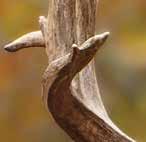
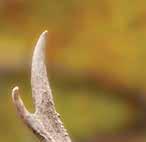


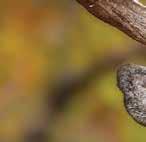
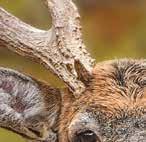
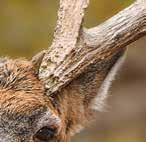
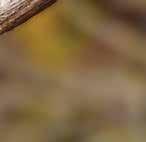

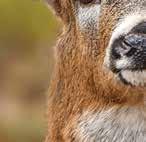
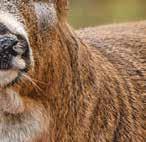





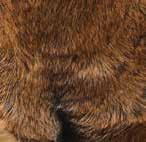














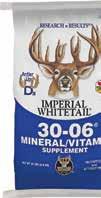
















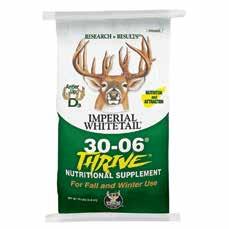
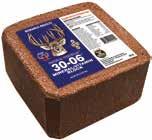
and vitamin supplementation is vital for maximum antler growth. 30-06 mineral and vitamin supplements are scientifically designed and professionally formulated to provide maximum deer nutrition. 30-06 products are also extremely attractive to whitetails. (30-06 products might be considered bait in some states. Check your local game regulations before using or hunting over 30-06.)
the leader since 1988 WHITETAIL INSTITUTE SUPPLEMENTS WHITETAIL INSTITUTE 239 Whitetail Trail, Pintlala, AL 36043 • 800-688-3030 • www.whitetailinstitute.com
RESULTS RESEARCH EQUALS Mineral
Still

50 Whitetail News | Vol. 32-3
NOT JUST A PRETTY BAG
Don’t be swayed by clever marketing ploys. Trust a food plot seed company that has produced proven results for decades.
■ by Matt Harper
If you’ve read this before, pretend it’s the first time: It’s often said the world is run by lawyers. But I think marketers might have equal if not more influence on the world today.
Why discuss marketing in a hunting magazine (as I’m sure my editor is wondering)? As hunters, we’re extremely susceptible to marketing trickery and shenanigans. However, you must look beyond packaging, claims and endorsements to find out if food plot products can back up their hype. (Spoiler alert: Whitetail Institute products have been proven to do that.) But first, let’s dig into the food plot marketing world.
Marketing Strategy
Marketers do more than create catchy slogans and tantalizing advertisements. They dig deep into the collective psyche of people, mining for primary factors that influence decision making, and then manipulate those triggers to make you want to buy a product.
I know this because I’ve managed marketing teams for many years. And I’ve found that although marketing has become more complicated, it’s also easier in some ways. There are so many platforms today — print, TV, social media and others — that you can bombard your target audience daily and wear them down. But marketing doesn’t have to be 100 percent fact. It can be 1 percent truth and 99 percent BS, because no one really regulates it. I used to think you couldn’t make outright false claims, but I’m not sure anymore.
For example, my wife likes various types of tea, coffee and juices. Recently, I read an eye-catching label on one brand of tea. In the ingredients section, along with some herbs I’m not so sure weren’t made
up, it said “LOVE” in all caps. It didn’t say that on a random part of the label but in the actual ingredient section. I guess it passes scrutiny because it’s cute and makes people feel warm and good about what they’re drinking. The logical left brain knows love is not a physical ingredient, but the right brain says, “Oh well, it makes me happy.”
The more primal the subject, the deeper marketers can cut to elicit a response. Sex, food and family are primal components and can be easily touched to prompt a stronger response. Hunting is also primal. At its root, it’s a source of survival; a means by which we obtain subsistence. Additionally, hunting involves another core element: ego. You might say you don’t hunt for the prestige of bagging a trophy buck. But even bringing home meat for the family can produce a gratification that boosts ego. After all, the hunters who always brought home meat for the village were held in the highest regard.
But most of us are also looking for a big, mature buck. Even if you’re not splashing it across social media or filming it, pride is often present. You might not tell anyone about a huge buck you shot, but you’ll probably reflect proudly about how you matched wits and skill against a whitetail’s superior senses and wariness and won. And there’s nothing wrong with that. I just wanted to present the rules of the hunting marketing game.
The Eye
Humans are predators, regardless of what Disney wants you to believe. Some might say we can eat vegetation, but so can bears. As predators, our vision is trained for specific triggers, including movement. That’s why flashing lights grab our attention more than static lights. Our vision is also attracted
Vol. 32-3 | Whitetail News 51
■ Every new product from Whitetail Institute undergoes many years of rigorous testing in trials across the country before it comes to market. Only the ones that pass muster reach store shelves.
SOIL TEST KIT
Whitetail Institute Soil Test Kits provide the data you need for great food plots. Professional laboratory soil testing is one of the most important things you can do to ensure food plot success. The Whitetail Institute offers professional results and recommendations for all Imperial Whitetail products, as well as other crops. Accurate fertilizer and lime recommendations are provided.
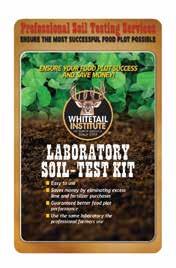

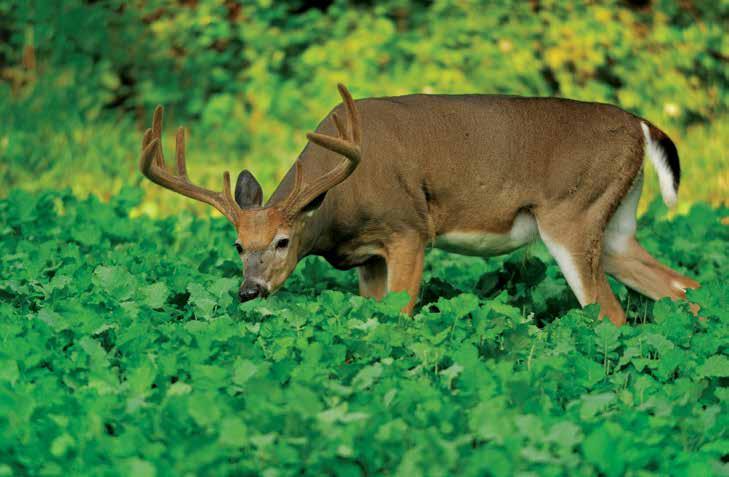
Don’t want to wait for your kit?
Don’t want to wait for your kit?
Download Your Soil Test TODAY!
Instant online access can be found at: https://bit.ly/35KoS7f
Please send Soil Test Kits at $13.95 each. FREE Shipping and handling
Please send Soil Test Probe at $129.00 each. FREE Shipping and handling

Add 7% Sales Tax. Cost of kit includes test results and phone consultation. (Results are available 24-48 hours after the laboratory receives the sample.)
SHIP TO:
Name:
(No PO
Address: City: State: ZIP: Phone: Email:
Payment: ❑ Check or Money Charge to: ❑ Visa ❑ Mastercard ❑ Discover ❑ AMEX
Order enclosed
Credit Card: Exp. Date: Sec.Code:
Signature:

Whitetail Institute
MAIL TO: 239 Whitetail Trail, Pintlala, AL 36043 CALL TOLL FREE: 800-688-3030 • www.whitetailinstitute.com
 CHARLES
J. ALSHEIMER PHOTO
CHARLES
J. ALSHEIMER PHOTO
Boxes)
to contrast, especially vibrant colors. For example, someone wearing hunter orange will immediately stand out. Product package designers know that and use bold, vibrant color schemes to attract attention. When you walk down the deer nutrition aisle at any major sporting goods store, you’ll feel like you’ve been transported to the Vegas strip, minus the flashing lights.
People also tend to be more visually focused on pictures instead of words. We’re far more likely to recall a subject when it’s accompanied with a stunning image. Have you ever seen a deer food plot seed package that proudly touts a 1-1/2-year-old forkhorn? Of course not, because who wants to plant something that grows forkhorns? You’re more likely to see a massive brute that would be
want to buy it because you want a buck like that. Elementary, yes, but it still works. If I asked whether a big buck on a bag equals real results, I’m guessing most would say no. But if I placed a bag with an image of a forkhorn next to one with a giant buck, I’m guessing the forkhorn would stay on the shelf.
To identify true differences in quality, read the product contents to know what’s actually behind the pretty picture. Deer mineral is a great example. Many mineral products have big deer on the bag, but if you look at the label, you see it’s almost 100 percent salt — the same salt you can buy at a feed store in a plain bag. Does the product have the crucial macro and trace minerals and vitamins deer require, and are they in the right amounts, from
to make it effective? Does that mean a deer mineral with the picture of a big buck is not a good product? No, but the picture doesn’t provide evidence of its performance.

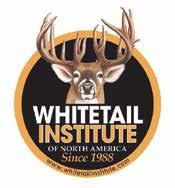
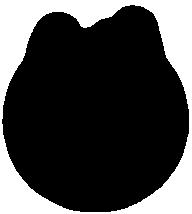

Promises





This is probably one of my favorite marketing components in deer nutritional management products. The promises and claims on packaging and advertisements of many products are at least a stretch and borderline preposterous at worst.
Two of my favorites are, “Grow big bucks,” and, “Bring big bucks for miles.” Can a high-quality, high-nutrition food plot help bucks grow larger, and can good food attract deer, including mature bucks? Absolutely, but you

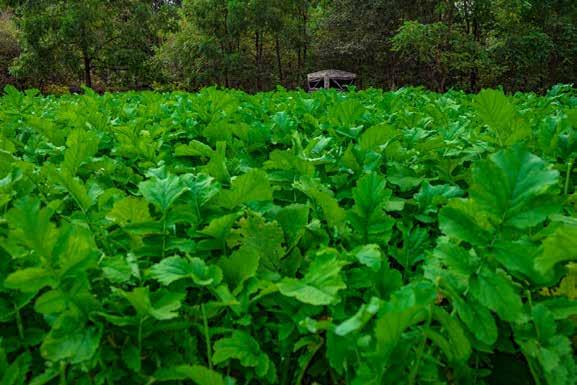

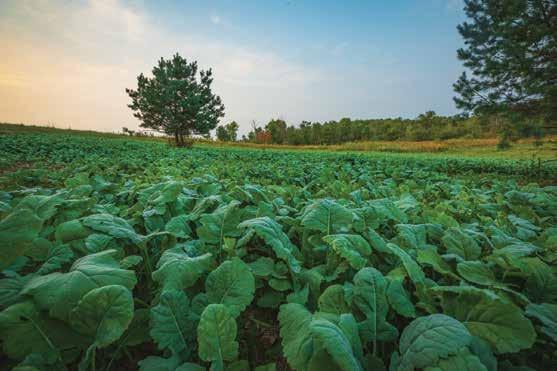



“
1-800-688-3030 WhitetailInstitute.com FOOD PLOT CONSULTING Let Whitetail Institute’s Next Level Food Plot Consulting’s team of wildlife biologists, agronomist and weed specialists help you improve your property and hold more deer and shoot bigger bucks! Expert advice tailored to your unique property’s needs. On Site Visit & Property Tour Comprehensive Management Plan PlotPerfection Subscription Planting Schedule & Instructions Hunting Strategy Recommendations Soil Testing CONSULTATIONS INCLUDE: WANT TO TAKE YOUR PROPERTY TO THE NEXT LEVEL?
“TO IDENTIFY TRUE DIFFERENCES IN QUALITY, READ THE PRODUCT CONTENTS TO KNOW WHAT’S ACTUALLY BEHIND THE PRETTY PICTURE.”
First, it takes many factors to have big bucks on your property, not simply a food plot. Further, the average size of a mature buck varies from region to region. You probably won’t grow a Midwest-sized buck in Florida by simply planting a food plot. A highly nutritious food plot can help you realize the genetic potential for the area, but other management practices must be in play. Are you improving habitat, managing your herd density and letting immature bucks walk? Merely planting a food plot does not mean you should get your record-book-entry paperwork ready.
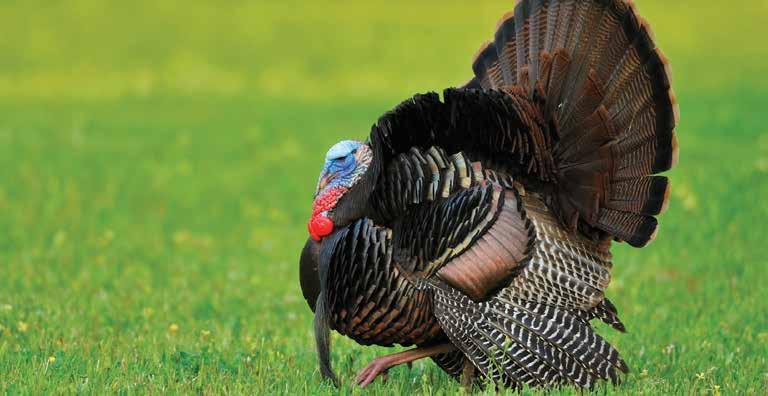
The same can be said about claims of attracting big bucks to a food plot. It has to be highly attractive, but you also can’t continuously blow out an area by making poor human pressure decisions. Mature bucks are extremely wary, and they won’t come to the most delicious food during daylight if they’re over pressured. An attractive plot can help attract deer, but it’s not a guarantee and not the only factor.

Ultimately, a statement is just a statement, and if it’s unregulated, you can pretty much say what you want.
Endorsements

I won’t spend lots of time on this because I think most people don’t tie purchasing decisions to celebrity endorsements. Those folks are being paid to endorse a product. Some have integrity, but others would hook their name to a product provided it was accompanied by a paycheck. I won’t mention names, but I know a couple of examples in which endorsers hadn’t scratched an inch of dirt in their lives let alone have the scientific or practical credentials to give worthwhile advice. I have nothing against celebrity endorsements, but I put the most stock in folks who have used a product year after year with continued success, especially if there are multiple examples of similar testimony.
Reality
You can’t believe all you’re told,
which I think we know. But some pretty shrewd marketing folks know our weaknesses and how to use them. So what’s the answer? Don’t believe anything? I wouldn’t go that far, but I would take marketing ploys with a grain of salt and approach them with research and verification.
It doesn’t take much to throw together a food plot mix from some seed varieties at a local farm store, and there’s a chance it will grow, and deer might even eat it. But is there any research behind that mix? Is the product living up to its claims and providing high-quality nutrition, and has it been tested and proven across the whitetail’s range and through multiple growing seasons? Extremely few products can back that up, but one that can is packaged in an unassuming bag that’s far from audacious. It has been around for years, and the graphics and wording on the bag have changed little. It has an impressive buck on the front, but that’s also the logo of the company. The product is called Imperial Whitetail Clover, and
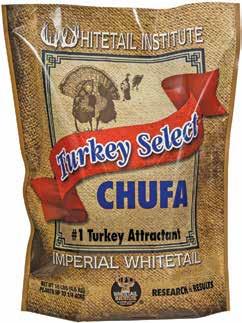
Scratch One Up
ORDER TODAY! 800-688-3030 www.whitetailinstitute.com 239 Whitetail Trail, Pintlala, AL 36043 TURKEY SELECT CHUFA Order NOW to guarantee your spring planting! DON’T MISS YOUR WINDOW! LIMITED SUPPLIES PRE-ORDER TODAY
Turkey Select is a high-quality chufa seed that attracts and holds turkeys on your property. Chufa plantings are considered by many to be the #1 attractant for turkeys. The nut-like tubers produced by Turkey Select are scratched up and devoured by turkeys.
although it has been around for threeand-a-half decades, it continues to set the standard on claim legitimacy.
Now you might say, “Hey, wait a minute, didn’t you tell me you were a marketing guy? So how do I know this isn’t some of the BS you warned me about?” As mentioned, you have to research whether a product stands up to its claims.
First, the product was created and continues to be improved by renowned Ph.D. agronomists and plant breeders. The critical word is created, as it remains the only clover variety bred specifically for white-tailed deer food plots. It boasts protein levels in the mid 30s, but the boast is backed up by reams of nutritional analysis. It has been tested through hundreds of field research plots from Canada to Alabama and

Maine to the Rockies. Millions of acres of Imperial Whitetail Clover have been planted by hundreds of thousands of customers, with great results. To my knowledge no other food plot product can boast such a track record.
Whitetail Institute’s slogan says “Research = Results,” and that isn’t just a cute marketing phrase. Every new product from Whitetail undergoes many years of rigorous testing in field trials across the country before it comes to market. In fact, most don’t make it to market — only the ones that can stand up to the strict scrutiny Institute researchers use.

Conclusion
No one likes to have the wool pulled over their eyes, because there’s something about being told partial truths or
falsehoods that anger us. And putting in a food plot isn’t a free endeavor. The time it requires is equally important. You need to look beyond packaging, claims and endorsements to find out if what you’re buying is worth the time and money spent. You might think, “Of course he’s writing about a Whitetail Institute product; it’s the company’s magazine.” That doesn’t discount the facts when you dig into them, nor does it make it untrue. In fact, there’s more data to back claims about Whitetail Institute products than anything else on the market.
The point is to look beyond face value. Dig deeper and find out if a product can prove itself.

“
“THERE’S MORE DATA TO BACK CLAIMS ABOUT WHITETAIL INSTITUTE PRODUCTS THAN ANYTHING ELSE ON THE MARKET.”
RESULTS RESEARCH EQUALS
ORDER TODAY! 800-688-3030 www.whitetailinstitute.com 239 Whitetail Trail, Pintlala, AL 36043 WHITETAIL INSTITUTE CONCEAL
PHOTO BY JASON SAY Imperial Whitetail Conceal is designed to create thick cover, screens, funnels or other types of strategic plantings. A blend of tall growing seed varieties, growing at different heights to produce foliage up to 8 ft tall.
POWERPLANT:
WHY IT’S SO IMPORTANT
Managers of deer and other wildlife can see significant benefits from this blend.
As of this writing, Oct. 6, 2022, we’ve had little rain in my home area of northwestern Alabama. Some mast crops are starting to fall. Otherwise, deer nutrition would be in shambles, because during this time, the woods are green, but natural foods are not so palatable or nutritious. Deer have just come through fawning and are still active in some areas. Also, bucks are rubbing the rest of their velvet.
During such periods, Imperial PowerPlant provides a bridge to help supplement native forbs, grasses, acorns and legumes while providing a high-protein kick to reach the 16 to 18 percent protein needed for fawning and antler growth. Here’s how I use PowerPlant and how it helps me in wildlife management.
Cover
The white-tailed-deer is a creature of
■ by Jody Holdbrooks
safety and security. If you can create a safe area while maintaining cover, bedding areas and highly palatable forages, you’ve hit the jackpot. With PowerPlant, you can provide a highly nutritious forage while making deer feel safe and secure in an area. I love creating annual food plots in fall with standing PowerPlant. Further, you can almost design your bow shots if it works out. Also, I use lanes in PowerPlant fields to train dogs and hunt the plots for northern bobwhite quail. PowerPlant grows a tall, seed-producing crop that works great to hold game birds of all ages.
Nutrition
PowerPlant lets you plant a spring/ summer plot that will provide nutrition for bucks growing new antlers and does that recently dropped fawns and are weaning them. It also provides the nutrient balance to help fawning does.
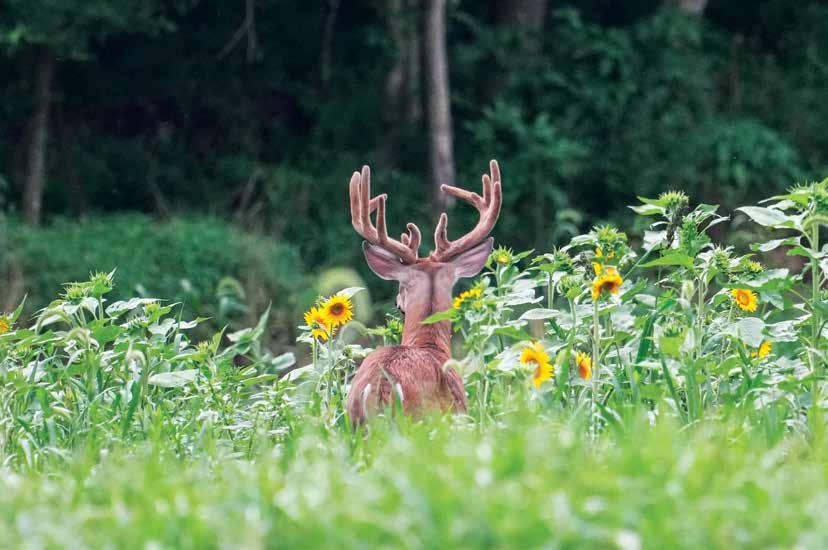
Let’s dig into a bag of PowerPlant and look at the forages. It includes a true forage-type vining soybean that can tolerate heavy grazing better than agricultural soybeans. Also, it features climbing forage peas for increased variety and high protein tonnage, and a small amount of sunflowers to provide a climbing lattice for vining legumes.
Further, it has sunn hemp, a highly attractive forage that withstands heavy grazing and also provides additional structure for vining legumes to climb Sunn hemp was a great choice to replace sorghum, as it changes several things about the blend. It’s a great soil builder, adding organic matter and nitrogen to the soil. Soil nutrition plays a huge role in food plot success. It’s also drought tolerant, and if you have issues with weeds, it can help suppress them.
Sunn hemp can grow to 6 feet high and offers up to 30 percent protein and
56 Whitetail News | Vol. 32-3
more foraging opportunities, as deer are attracted to its highly palatable leaves. It also produces nice cover and adds life to the blend, adding longevity to smaller fields. The hemp can keep producing even after deer start browsing it hard, and can tolerate the crown being removed.

Additionally, PowerPlant can be sprayed with Arrest Max, which lets deer managers treat grasses.

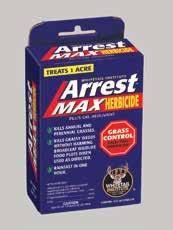
Design
Here’s an advantage of PowerPlant that can’t be discussed enough: It lets you create food plot designs and funnels. Many designs come to mind. One of my favorites is the hub-and-spoke, in which a fall planting such as Pure Attraction or No Plow can be planted in strips you have prepared to plant within PowerPlant. Sometimes, you can design patterns that might allow better shots.
You can also use PowerPlant to create funnels where deer can travel and feel safer than in the open. Anytime you can make a whitetail feel it has natural cover, the safer that deer feels. When the hemp and sunflower in PowerPlant grow to maturity, that should make bucks feel more secure feeding and visiting plots to check for does. Of course, that depends on the wind and your setup. With some foresight, you can create a great kill spot for bow season.
If you haven’t tried PowerPlant, I recommend it. Its potential benefits are endless. For PowerPlant to work best, you must let the plants reach maturity. When they do, the forage beans and peas will keep producing. And again, folks who manage for turkeys and quail can also reap benefits from PowerPlant.
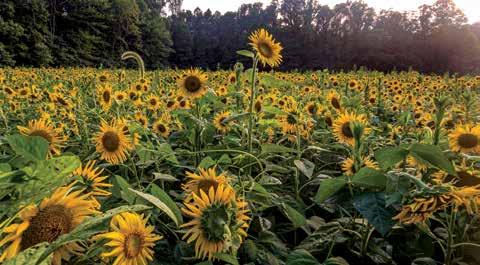
If you have questions about PowerPlant, call (205) 269-5228, or email Jody@whitetailinstitute.com.

WHITETAIL INSTITUTE HERBICIDE RESULTS RESEARCH EQUALS The Choice is Clear. Our Herbicides are researched and developed to produce high-quality plots. Less weeds means more quality food and simply more deer. ORDER TODAY! 800-688-3030 www.whitetailinstitute.com 239 Whitetail Trail, Pintlala, AL 36043
IMPERIAL WHITETAIL
CHUFA FOR TURKEYS
America’s No. 1 game bird loves the tubers produced by this perennial sedge.
Also known as ground almonds or tiger nuts, chufa is a perennial sedge that produces underground tubers that are a highly preferred, high-energy food source for turkeys and waterfowl. Chufa tubers rank No. 10 among the most important waterfowl foods in the United States, and many believe they’re the No. 1 choice for turkeys. Whitetail Institute Turkey Select Chufa is a high-quality chufa seed Whitetail Institute has sourced through its broad range of contacts in the seed industry for customers who manage properties for turkeys and deer.
Turkey Select should be planted in spring after there’s no remaining chance of frost. Exact dates, which vary regionally from April to June, appear on the back of the product bags and are posted at whitetailinstitute.com. Plant it early enough to leave 100 to 120 days for the plants to mature before the first frosts of fall. During summer, the plants produce underground tubers, and when the
■ by Whitetail Institue Staff
chufa foliage dries in fall, the tubers are mature, and turkeys dig them up and devour them.
Although chufa is a prolific-growing perennial, smaller plots in high-density turkey areas can be wiped out the first fall. But if you plant enough to withstand the initial attack, it can last for years, benefitting spring and fall turkey hunters. Obviously, the right amount will vary from case to case based on how much you plant and how many turkeys are in the area.
Chufa can do well in a wide variety of soils, but light, loamy soils with a pH of 5.5 to 7.5 are optimum. Tuber production is generally lowest in sand. Also, planting in clay can make it more difficult for turkeys to dig up the tubers. Soils that retain moisture (but not wet) are optimum. Chufa can even adapt to temporary or seasonal flooding, provided the plants are not submerged. Prolonged flooding during the growing season or drought conditions can severely reduce
tuber production and chufa survival. Also, be sure the area you select receives a lot of sunlight. Even as little as 30 percent shade can substantially reduce tuber production.
Be sure to closely follow the Turkey Select planting instructions, on the back of the bags and at whitetailinstitute.com, because chufa generally needs a seedbed that’s largely free of competition from weeds. In sites where grass competition is expected to be especially heavy, it can be wise to incorporate Roundup into seedbed preparation. Turkey Select is also Arrest MAX-approved to help you keep competing grasses in check through spring and summer after planting.
Turkey Select is available in 10-pound bags that plant 1/4 acre. For additional information, go to whitetailinstitute. com, or call (800) 688-3030.
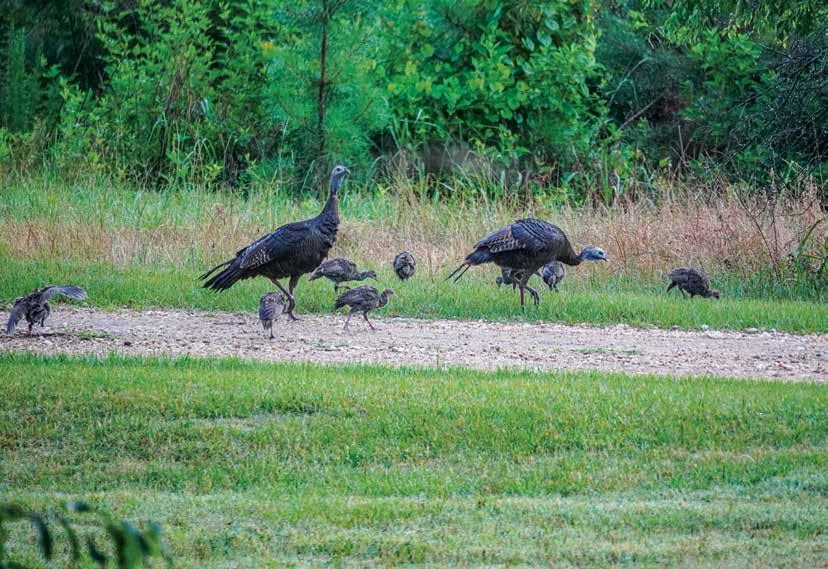
58 Whitetail News | Vol. 32-3
■ In 2021, I cleared out a big thicket we had running through the woods, and then tilled it up and planted a trial run, and it turned out OK. In 2022, I planted clover and chicory, and it turned out amazing. I mowed it twice and sprayed it twice, and the deer are loving it.


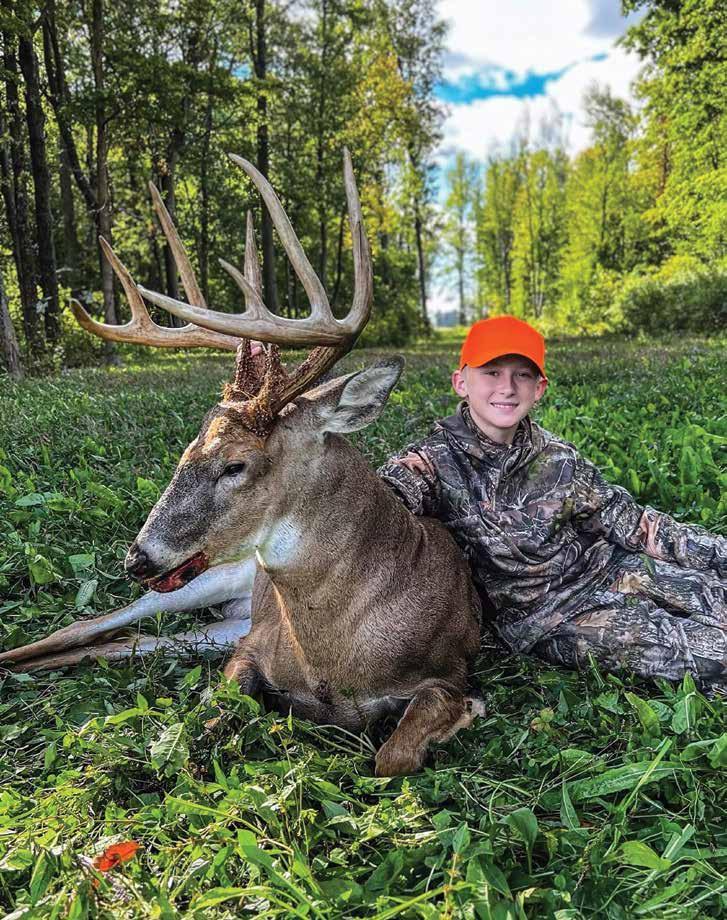
Vol. 32-3 | Whitetail News 59 MY TROPHY WHITETAILS
DUSTIN RIGGS | INDIANA
■ I just wanted to show you my success this year. Food plots made the difference.
■ I have been a longtime customer of Whitetail Institute products, but this year, I had my best success ever. On opening day, I shot at but misjudged the distance on a 13-point velvet buck. On the third night of the season, my wife shot at the velvet buck and thought she missed. But when we looked for her arrow, we found blood, indicating she had hit him. I trailed the deer but lost blood. That evening, I shot a 10-point buck. Two nights later, the 13-point velvet buck showed up in front of my wife, within 10 yards of where she’d shot him the first time. This time, her shot was true, and the buck piled up within 30 yards of where she shot him. A velvet buck is very rare in Ohio. Most bucks lose their velvet by Sept. 1.



■ I’m still lost for words. After a lot of hard work planting our Whitetail Institute food plots, checking our Moultrie cameras and practicing with his bow, my son made it happen on one of our target bucks. We’re still on an emotional high on the memories we just made. I also want to give a huge shout-out to everyone at Whitetail Institute for posting all their experiences in food plotting and answering any questions I’ve asked. Believe me, you really help all of us. Thank you all again.
• https://whitetailinstitute.com/field-tester-survey/

60 Whitetail News | Vol. 32-3 MY TROPHY WHITETAILS
ANDY CHRONISTER | KANSAS
IMPERIAL WHITETAIL PLEASE SCAN HERE AND TAKE A QUICK SURVEY
JOE MILENKOVIC | OHIO
JEFF MORGAN | WEST VIRGINIA
■ I’ve been planting Whitetail Institute products on my place since 2015. I only have 20 acres, about half wooded and half fields. When we moved here, I had to hunt in the woods to see any deer. I quickly noticed that the daytime deer activity really slacked off after a few hunts inside the woods. I knew I was spooking deer by entering the small woodlot, so I decided on another approach going forward. The next spring, I planted about 4 acres of PowerPlant. I got lots of pictures of deer that summer. When September rolled around, I bush-hogged an area for a plot and planted AlfaRack. That AlfaRack plot lasted several years and produced several bucks for my children. I’m planning on replanting that same plot in Fusion this fall. Attached are a few pictures from my little 20-acre farm in northern Alabama. One is a picture taken from my shooting house overlooking a Pure Attraction plot. Next are a couple of pictures of bucks taken by two of my sons on our AlfaRack plot. Whitetail Institute products have proven to be great products for my little slice of land, and I credit them for helping attract and hold bucks on my place.

■ The top photo shows a young 9-point going into a field of PowerPlant. We had many photos of this buck and his bachelor group feeding on PowerPlant the first year we planted it. We’ve planted it every year since. We also had a tall 10-point that walked out of a field of PowerPlant and into a field of Fusion to eat. On Nov. 5, 2020, I harvested that buck. The lower photo shows our largest buck to date — a 151-2/8-inch 10-point with a 20-1/4-inch spread. I shot him chasing a doe into a Beets and Greens field Halloween night 2021. He was No. 4 on our shooter list. We continued to get pictures of the larger bucks into winter, hitting our Beets and Greens food plots.
■ Each year, we progressively see larger-bodied deer, including larger racks, and more bucks in the area. We’ll continue to use Whitetail Institute products. I’m looking to try PowerPlant in spring.


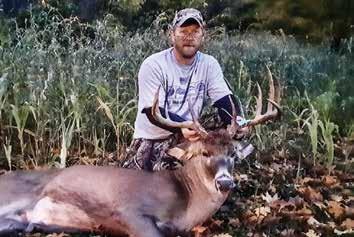



Vol. 32-3 | Whitetail News 61 MY TROPHY WHITETAILS
ADAM MASON | ALABAMA
MATT KANOUSE | MICHIGAN
MARK KOSZYK | VIRGINIA
SUCCESS
A Ravish Radish plot produces a youngster’s first whitetail.

Pictured is Wyatt Dial, of Effingham, Illinois. He recently killed his first deer over your Ravish Radish, which we planted in August. Wyatt killed his deer with a Ravin crossbow after a “grueling” five-minute hunt opening day. His family has used Whitetail Institute products


since the beginning in the 1980s, and they have accounted for many exciting moments for the Dial family and friends. Keep up the good work. It’s much appreciated.
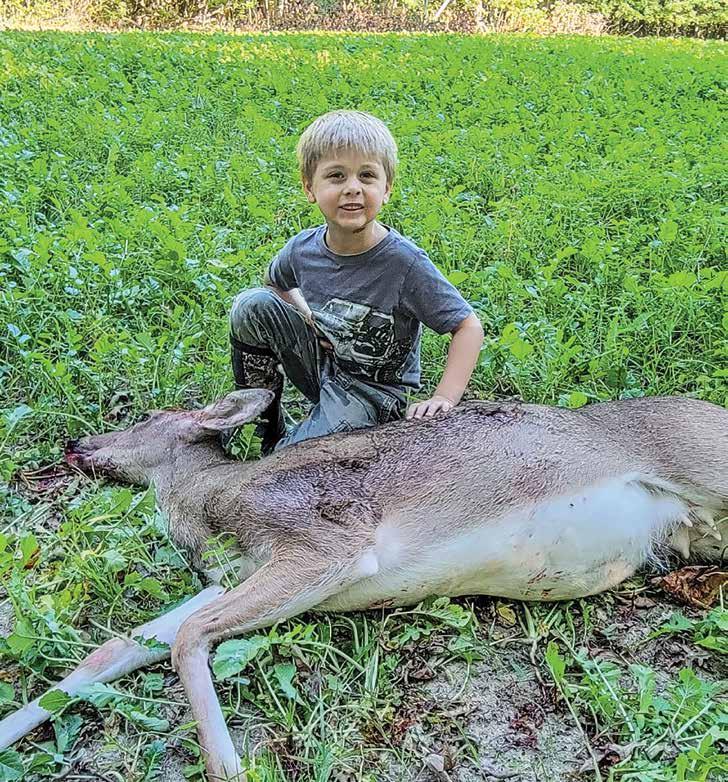
DEER
FIRST
■ by Tom Dial
62 Whitetail News | Vol. 32-3
FOOD P LOT PLANTING DATES…
PLANTING DATES FOR IMPERIAL CLOVER, ALFA-RACK PLUS, EXTREME, NO-PLOW, FUSION, CHIC MAGNET AND EDGE
1 Call for planting dates
2 Apr 1 - July 1
3 Apr 15 - June 15
Aug 1 - Sept 1
4 Coastal: Feb 1 - Mar 15
Sept 1 - Oct 15
Southern Piedmont:


Feb 15 - Apr 1
Aug 15 - Oct 1
Mountain Valleys: Mar 1 - Apr 15
Aug 1 - Sept 15
5 Feb 1 - Apr 1
Aug 1 - Sept 30
6 Feb 1 - Apr 15 Sept 1 - Nov 1
7 North: Mar 15 - May 1
Aug 1 - Sept 15
South: Mar 1 - Apr 15
Aug 15 - Oct 15
8 Apr 1 - June 15
July 15 - Sept 5
9 Apr 1 - May 15
Aug 1 - Sept 15
10 Mar 20 - May 15


Aug 1 - Sept 15
11 Sept 15 - Nov 15
12
PLANTING DATES FOR VISION, PURE ATTRACTION, SECRET SPOT,WINTER PEAS, BOWSTAND, AND DESTINATION
Aug 15 - Sept 15
Sept 1 - Oct 1
Sept 15 - Nov 15
PLANTING DATES FOR WHITETAIL OATS PLUS
Use the map above as a guideline for when to plant Imperial Whitetail Oats Plus in your area. For best results, wait to plant until excessively hot, droughty summer weather has passed. Imperial Whitetail Oats Plus is highly cold-tolerant and designed to provide abundant forage from fall into spring in the southern U.S. and from fall into winter in colder climates.

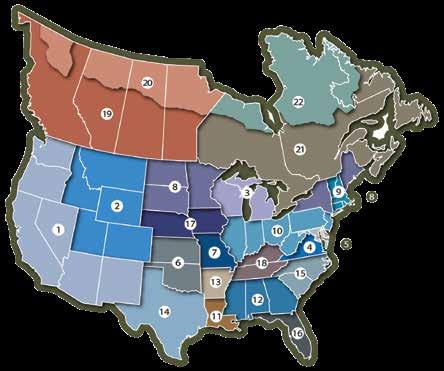
1 Call for planting dates
2 Call for planting dates
3 Aug 1 - Sept 15
4 Coastal: Sept 1 - Oct 15
Piedmont: Aug 15 - Oct 1
Mountain Valleys: Aug 1 - Sept 15
5 Aug 1 - Sept 30
6 Aug 15 - Nov 1
7 North: Aug 1 - Sept 30 South: Aug 15 - Oct 15
8 July 15 - Sept 5
9 Aug 1 - Sept 15
10 Aug 1 - Sept 15
11 Sept 15 - Nov 15
12 North: Sept 5 - Nov 15 South: Sept 25 - Nov 15
13 Sept 1 - Oct 30
14 North: Sept 15 - Nov 15 South: Sept 25 - Nov 15
15 Coastal: Sept 15 - Oct 15 Piedmont: Sept 1 - Oct 5
Mountain Valleys: Aug 25 - Oct 15
16 North: Sept 25 - Nov 25
South: South: Oct 5 - Nov 30
17 Aug 1 - Sept 15
18 Aug 20 - Sept 30
19 July 1 - Aug 15 20 June 15 - July 15 21 July 15 - Aug 31 22 July 1 - Aug 15
PLANTING DATES FOR WINTER-GREENS, TALL TINE TUBERS, BEETS & GREENS AND RAVISH RADISH
PLANTING DATES FOR POWERPLANT, REVIVE CONCEAL, SUNN HEMP AND TURKEY SELECT
*Do not plant PowerPlant, Sunn Hemp or Conceal until soil temperatures reach a constant 65 degrees F. Wait as long as necessary for soil temperatures to reach a constant 65 degrees F before planting. FOR THE

LATEST PROMOTIONS, SALES AND NEWS VISIT WWW.FACEBOOK.COM/WHITETAILINSTITUTE
May 20 - June 30
May 1 - June 30
April 1 - May 31
Feb 5 - Mar 1 North: Sept 5 - Nov 15 South: Sept 25 - Nov 15
Feb 15 - Apr 1 Sept 1 - Oct 30
North: Sept 15 - Nov 15 South: Sept 25 - Nov 15 15 Feb 1 - Mar 1 Coastal: Sept 25 - Oct 15 Piedmont: Sept 1 - Oct 5 Mountain Valleys: Aug 25 - Oct 15 16 North: Sept 25 - Nov 25 South: Oct 5 - Nov 30 17 Mar 1 - May 15 Aug 1 - Sept 15 18 Feb 1 - Apr 15 Aug 20 - Sept 30 19 Apr 15 - June 15 July 1 - Aug 15 20 May 15 -July 1 21 May 1 - June 15 July 1 - Aug 15 22 May 15 - July 1 1 Call for planting dates 2 Call for planting dates 3 July 1 - Sept 1 4 Coastal: Aug 15 - Sept 30 Southern Piedmont: Aug 1 - Sept 15 Mountain Valleys: Aug 1 - Sept 15 5 July 15 - Sept 15 6 Aug 1 - Oct 1 7 North: July 15 - Sept 15 South: Aug 1 - Oct 1 8 July 5 - Aug 20 9 July 1 - Aug 30 10 July 15 - Sept 15 11 Sept 15 - Nov 15 12 North: Sept 5 - Nov 1 Central: Sept 15 - Nov 15 South: Sept 25 - Nov 15 13 North: Aug 15 - Oct 1 South: Sept 5 - Oct 15 14 North: Sept 5 - Oct 30 Central: Sept 15 - Nov 15 South: Sept 25 - Nov 15 15 Coastal: Sept 1 - Oct 1 Piedmont: Aug 15 - Sept 20 Mountain Valleys: Aug 5 - Sept 15 16 North: Sept 15 - Nov 15 Central: Sept 25 - Nov 15 South: Oct 5 - Nov 30 17 July 15 - Sept 1 18 Aug 1 - Sept 30 19 July 1 - Aug 15 20 June 15 - Aug 1 21 July 15 - Aug 31 22 July 1 - Aug 15
13
14


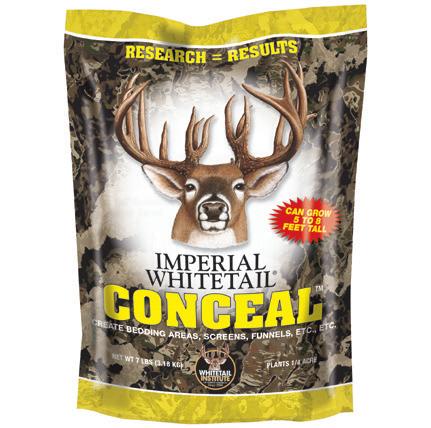
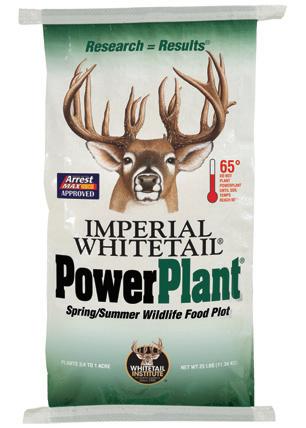
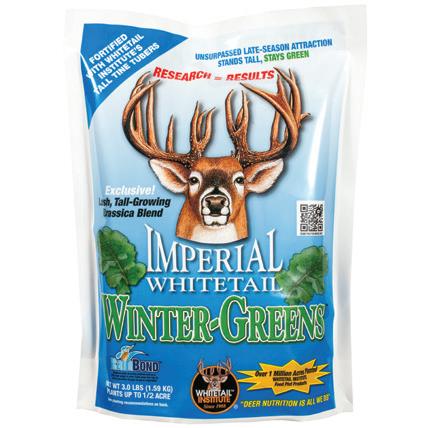

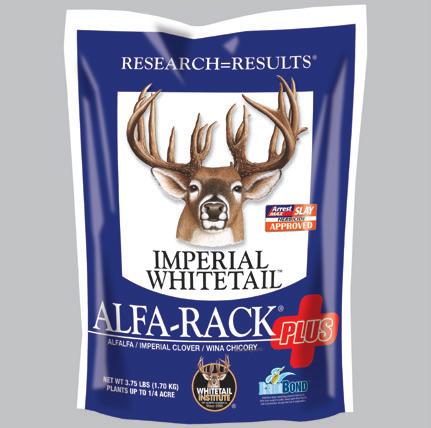
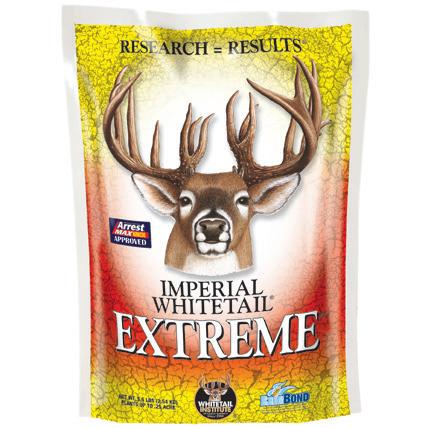

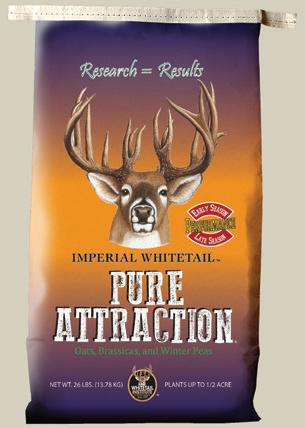



ORDER TODAY! DISCOUNT COUPONS SHIPPING INCLUDED IN PRICES IMPERIAL WHITETAIL Clover $249.99 + tax Suggested Retail $279.96 — (36 lb.) quantities of Imperial Whitetail Clover TOTAL (Add 7% Sales Tax) $ 36 LBS.-4.5-ACRE PLANTING IMPERIAL WHITETAIL EXTREME $246.98 + tax Suggested Retail $289.96 — (46 lb.) quantities of Imperial Whitetail EXTREME TOTAL (Add 7% Sales Tax) $ 46 LBS.-2-ACRE PLANTING IMPERIAL WHITETAIL CONCEAL $139.98 + tax Suggested Retail $159.99 — (28 lb.) quantities of Imperial Whitetail Conceal TOTAL (Add 7% Sales Tax) $ 28 LBS.-1-ACRE PLANTING IMPERIAL WHITETAIL FUSION $246.99 + tax Suggested Retail $289.96 — (27.75 lb.) quantities of Imperial Whitetail Fusion TOTAL (Add 7% Sales Tax) $ 27.75 LBS.-4.5-ACRES PLANTING $134.98 + tax Suggested Retail $140.00 — (50 lb.) quantities of Imperial Whitetail PowerPlant TOTAL (Add 7% Sales Tax) $ 50 LBS.-1.5-2-ACRE PLANTING IMPERIAL WHITETAIL PURE ATTRACTION $84.98 + tax Suggested Retail $114.96 — (39 lb.) quantities of Imperial Whitetail Pure Attraction TOTAL (Add 7% Sales Tax) $ 39 LBS.-.75-ACRE PLANTING IMPERIAL WHITETAIL WINTERGREENS $189.98 + tax Suggested Retail $219.96 (24 lb.) quantities of Imperial Whitetail Winter-Greens TOTAL (Add 7% Sales Tax) $ 24 LBS.-4-ACRE PLANTING IMPERIAL WHITETAIL “CHIC” MAGNET $99.99 + tax Suggested Retail $139.94 — (9 lb.) quantities of Imperial Whitetail “Chic” Magnet TOTAL (Add 7% Sales Tax) $ 9 LBS.-3-ACRE PLANTING IMPERIAL WHITETAIL TALL TINE TUBERs $164.98 + tax Suggested Retail $199.96 — (24 lb.) quantities of Imperial Whitetail Tall Tine Tubers TOTAL (Add 7% Sales Tax) $ 24 LBS.-4-ACRE PLANTING IMPERIAL WHITETAIL OATS PLUS $69.00 + tax Suggested Retail $89.00 — (45 lb.) quantities of Imperial Whitetail OATS Plus TOTAL (Add 7% Sales Tax) $ 45 LBS.-1/2-ACRE PLANTING IMPERIAL WHITETAIL ALFARACK PLUS $246.98 + tax Suggested Retail $289.96 — (33 lb.) quantities of Imperial Whitetail Alfa-Rack Plus TOTAL (Add 7% Sales Tax) $ 33LBS.-2.5-ACRE PLANTING IMPERIAL WHITETAIL No-PLOW $119.98 + tax Suggested Retail $139.96 — (36 lb.) quantities of Imperial Whitetail No-Plow TOTAL (Add 7% Sales Tax) $ 36 LBS.-2-ACRE PLANTING YOU SAVE $29.97 YOU SAVE $20.01 YOU SAVE $5.02 YOU SAVE $29.98 YOU SAVE $34.98 YOU SAVE $42.98 YOU SAVE $42.98 YOU SAVE $42.97 YOU SAVE $29.98 YOU SAVE $39.95 YOU SAVE $20.00 YOU SAVE $19.98 IMPERIAL WHITETAIL POWErPLANT
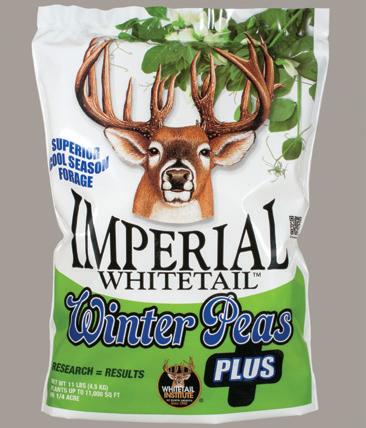

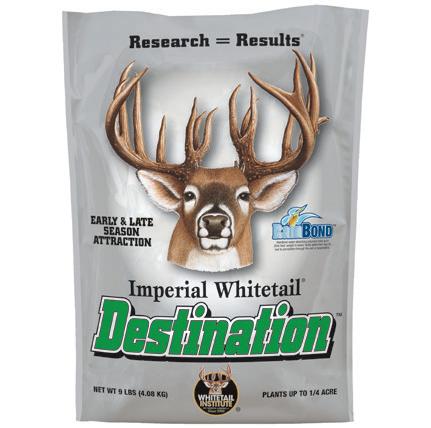
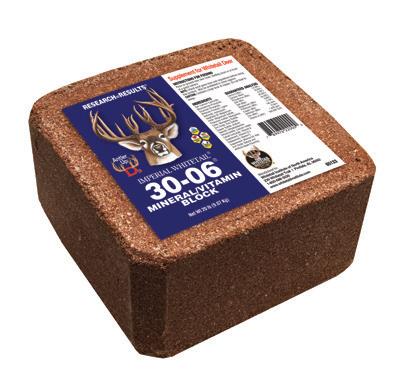

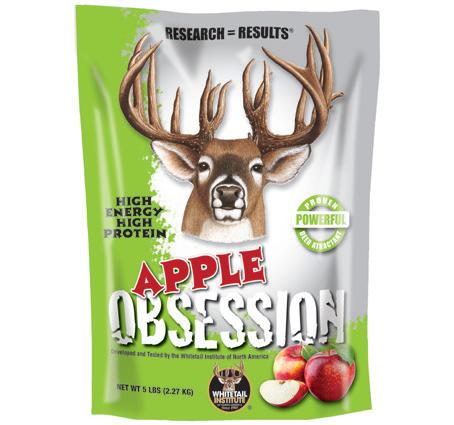

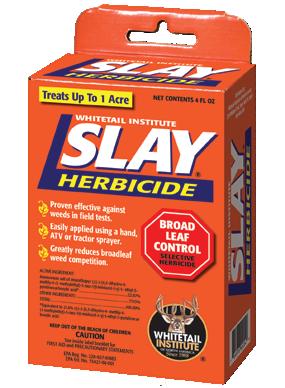
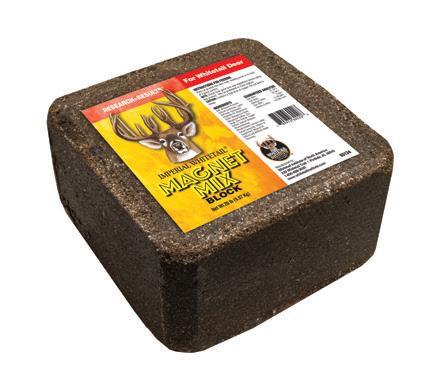
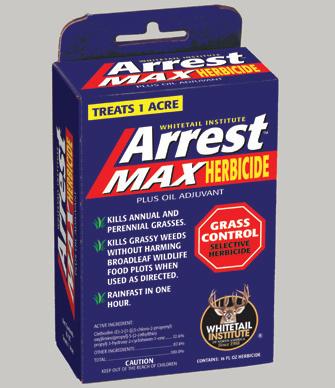
SHIP TO: Name: Address: City: State: ZIP: Phone: Email: Whitetail Institute MAIL TO: 239 Whitetail Trail, Pintlala, AL 36043 CALL TOLL FREE: 800-688-3030 • www.whitetailinstitute.com Payment: ❑ Check or Money Order enclosed
to: ❑ Visa ❑ Mastercard ❑ Discover ❑ AMEX Credit Card: Exp. Date: Sec.Code: Signature: (No PO Boxes, Cannot Ship to Canada) IMPERIAL WHITETAIL WINTER PEAS PLUS $129.98 + tax Suggested Retail $149.96 — (44 lb.) quantities of Imperial Whitetail Winter-Peas Plus TOTAL (Add 7% Sales Tax) $ 44 LBS.-1-ACRE PLANTING IMPERIAL WHITETAIL RAVISH RADISH $79.96 + tax Suggested Retail $94.96 — (10 lb.) quantities of Imperial Whitetail Ravish Radish TOTAL (Add 7% Sales Tax) $ 10 LBS.-1-ACRE PLANTING IMPERIAL WHITETAIL DESTINATION $129.98 + tax Suggested Retail $137.02 — (36 lb.) quantities of Imperial Whitetail Destination TOTAL (Add 7% Sales Tax) $ 36 LBS.-1-ACRE PLANTING IMPERIAL WHITETAIL 30-06 block $34.98 (one block) Suggested Retail $39.95 $57.98 (two blocks) Suggested Retail $69.95 + tax — (2) -Pak blocks @ $57.98 — (1) -Pak blocks @ $34.98 TOTAL (Add 7% Sales Tax) $ IMPERIAL WHITETAIL Magnet Mix Block $32.99 (one block) Suggested Retail $39.95 $57.98 (two blocks) Suggested Retail $69.95 + tax — (2) -Pak blocks @ $57.98 — (1) -Pak blocks @ $32.99 TOTAL (Add 7% Sales Tax) $ IMPERIAL WHITETAIL KRAZE $42.98 (4) pak Suggested Retail $52.99 $59.99 (6) pak Suggested Retail $75.99 + tax — (4) 5lb bags @ $42.98 — (6) 5lb bags @ $59.99 TOTAL (Add 7% Sales Tax) $ IMPERIAL WHITETAIL Apple obsession $44.99 (4) pak Suggested Retail $52.99 $64.99 (6) pak Suggested Retail $75.99 + tax — (4) 5lb bags @ $44.99 — (6) 5lb bags @ $64.99 TOTAL (Add 7% Sales Tax) $ ARREST MAX HERBICIDE • 1 PINT-1 ACRE • 1/2 GALLON-4 ACRES IMPERIAL WHITETAIL IMPACT SOIL AMENDMENT • 8.5LBS - .5 ACRES • 25.5LBS - 1.5 ACRES — (8.5lbs) of Impact $59.99 — (25.5lbs) of Impact $149.94 TOTAL (Add 7% Sales Tax) $ + tax $59.99 (8.5lbs) Suggested Retail $80.00 $149.94 (25.5lbs) Suggested Retail $169.95 SLAY HERBICIDE • 4 OZ.-1 ACRE • 1 PINT-4 ACRES YOU SAVE $19.98 YOU SAVE UP TO $16.00 YOU SAVE $15.00 YOU SAVE UP TO $11.00 YOU SAVE $7.04 YOU SAVE UP TO $20.01 YOU SAVE UP TO $11.97 YOU SAVE UP TO $19.02 pint(s) of Arrest Max Herbicide 1/2 gallon(s) of Arrest Max Herbicide TOTAL (Add 7% Sales Tax) $ + tax $56.99 (1 pint) Suggested Retail $69.99 $159.99 (1/2 gallon) Suggested Retail $169.00 4 oz. of Slay Herbicide pint(s) of Slay Herbicide TOTAL (Add 7% Sales Tax) $ + tax $57.98 (4 oz.-1 acre) Suggested Retail $72.99 $149.98 (1 pint-4 acres) Suggested Retail $169.00 YOU SAVE UP TO $11.97 YOU SAVE UP TO $13.00
Charge
BACK-40 NOTEBOOK
■ Brian Lovett~Whitetail News Senior Editor
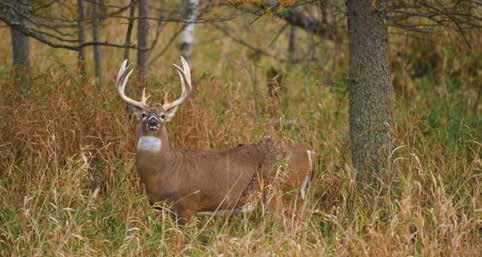
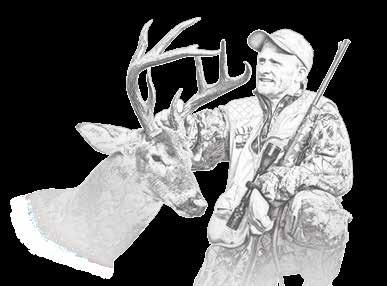

THE THRILL OF NOT KNOWING
The first notes from a barred owl cut the wind and echo across the dark ridge.
“He’s at it early,” I think, checking my phone’s clock. “Thirty minutes till legal light. Well, nothing to do but wait.”
And think, of course. Every hunt is unique, but the gun-season opener has always been momentous, seemingly marking the passage of another year and separating the time of autumn’s bounty from the harsh, bare winter ahead. It also provides many hours on stand to review the season’s ups and downs and assess the relative success of our efforts on the land.
Those endeavors encompass the plans and actions designed to improve our little property for wildlife and, hopefully, boost our odds of taking a good buck in fall and a gobbler or two in spring. In hindsight, it’s pretty easy to identify the wins: better trails in the timber and some dandy annual plots along the ridge and creek bottom. It’s also humbling yet apparent to assess the losses: more work required on the main food plot, and probably lots of fine-tuning with access and stand placement. Every outdoorsman knows you must anticipate and accept some ups and downs and learn to appreciate the journey. Still, expectations about improving specific situations and boosting the chances of success gnaw at the back of my mind. After all, most of us would admit that although we enjoy habitat work and appreciate all its benefits, we undertake it mainly to put more factors in our favor. And with that comes the unrealistic notion that we can control every element and be sure of potential outcomes, whether for a day or an entire season.
Ten minutes left. The wind again whips across the bare timber, creating a cascade of sound along the ridge. Maybe that’s the light snap of a hoof crunching leaves, or
perhaps it’s just a black walnut plopping into a bed of duff. Or could it be a buck trying to slip back to bed? I’m anxious to find out, but I’ll have to wait and cannot know until the answer reveals itself.
That’s a bit uncomfortable. We crave certainty in so many aspects of hunting and management, and honestly, with the knowledge and technology available to us, we’ve become pretty good at attaining a great degree of that. Yet despite our success, the vagaries of Mother Nature often trump everything. You might base decisions on solid evidence and experience, but the fickle nature of our quarry and the landscape can change everything. In many situations, you simply cannot know.
That’s frustrating but also pretty cool. Uncertainty will always be part of the game. Not knowing when or if a buck will appear only makes his appearance more thrilling. Wondering for hours whether that will occur stokes the fire of anticipation. Guessing correctly lets us learn and improve. Making the wrong move starts the learning curve anew and drives us to get better.
So although it would be great to attain a high degree of certainty about how a hunt might play out, it’s probably best that we cannot. To lean on a tired sports cliché, you have to play the game.
And with that thought and the optimism it sparks, legal light has arrived. I immediately spy several does and fawns slipping through the timber toward my stand. Hopefully, one of the bucks that inhabits the area might follow. Yet maybe one won’t. I simply don’t know, and I’ll spend the day hoping to hedge my bets while waiting to be surprised. At the day’s end, I’ll probably look back at each deer encounter — or lack of encounters — slap my forehead, affirm my expectations or scold myself that I should have known better. But then tomorrow, I’ll rise and do the same thing, shuffling off to a dark stand to chase certainty and hopefully intercept a buck, all the while not knowing and secretly gleeful that will never change.
66 Whitetail News | Vol. 32-3
We can control many aspects of hunting. Some remain just out of reach, however, and that’s probably best.
IMPERIAL WHITETAIL CLOVER
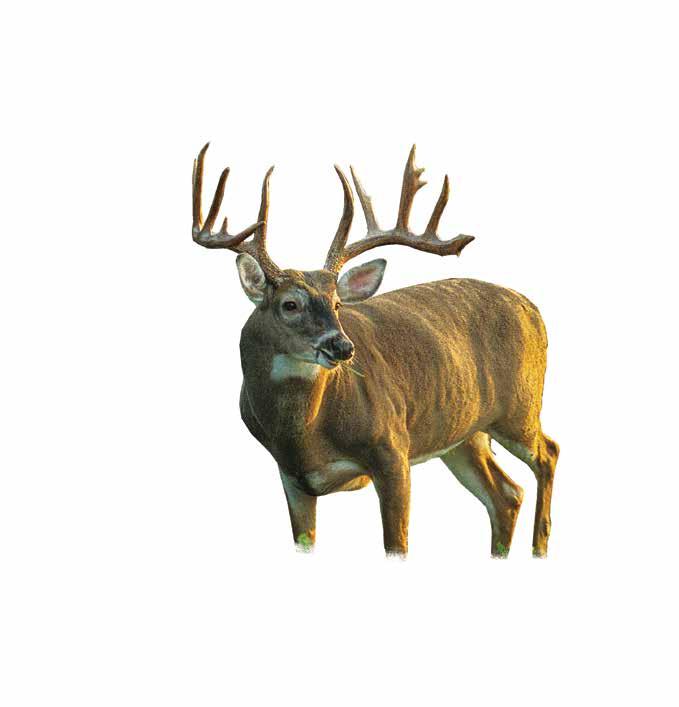

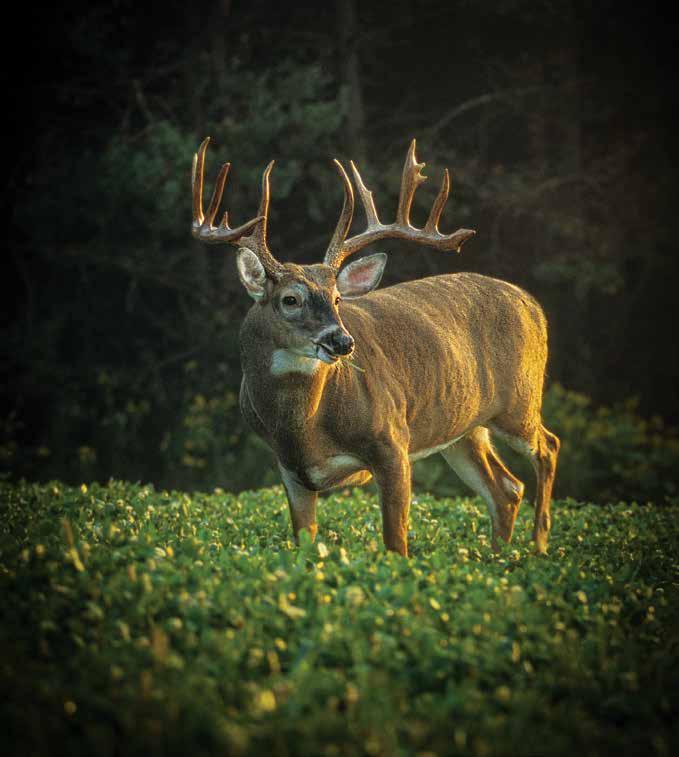
Imperial Whitetail Clover provides attraction and up to 35% protein levels. These proprietary clovers were developed by Whitetail Institute agronomists.

Still the leader since 1988

WHITETAIL INSTITUTE 239 Whitetail Trail, Pintlala, AL 36043 • 800-688-3030 • www.whitetailinstitute.com






















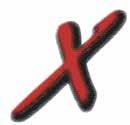

www.TexasHunter.com 800.969.3337 REQUEST CATALOG ONLINE TODAY! capacities available: 600 lb · 1200 lb · 2000 lb















 — William
— William















































 ■ by Darron McDougal
■ by Darron McDougal











 ■ by Jody Holdbrooks
■ by Jody Holdbrooks





















































































 ■ by Matt Harper
■ by Matt Harper








































 CHARLES
J. ALSHEIMER PHOTO
CHARLES
J. ALSHEIMER PHOTO

























































































